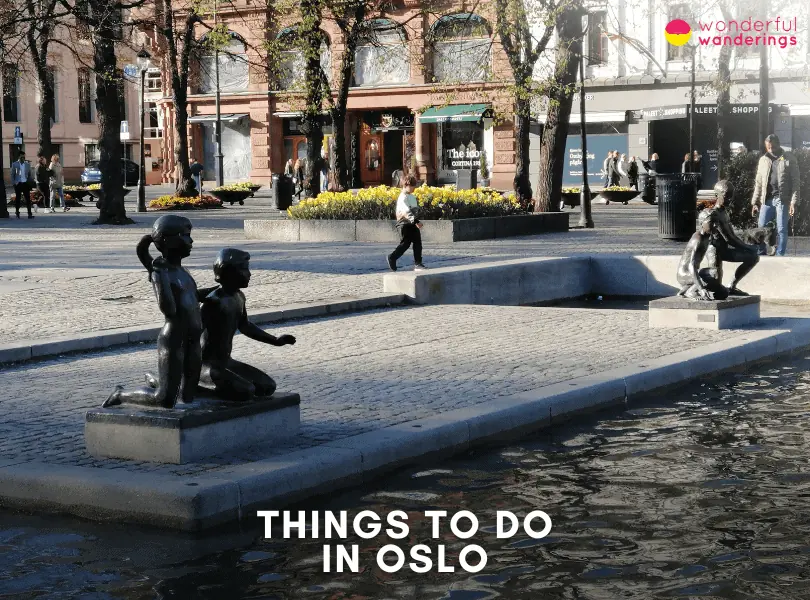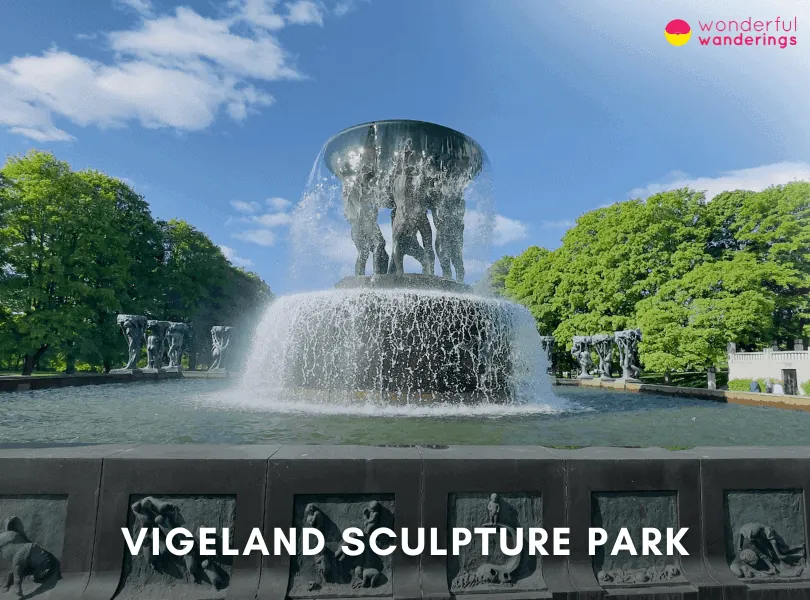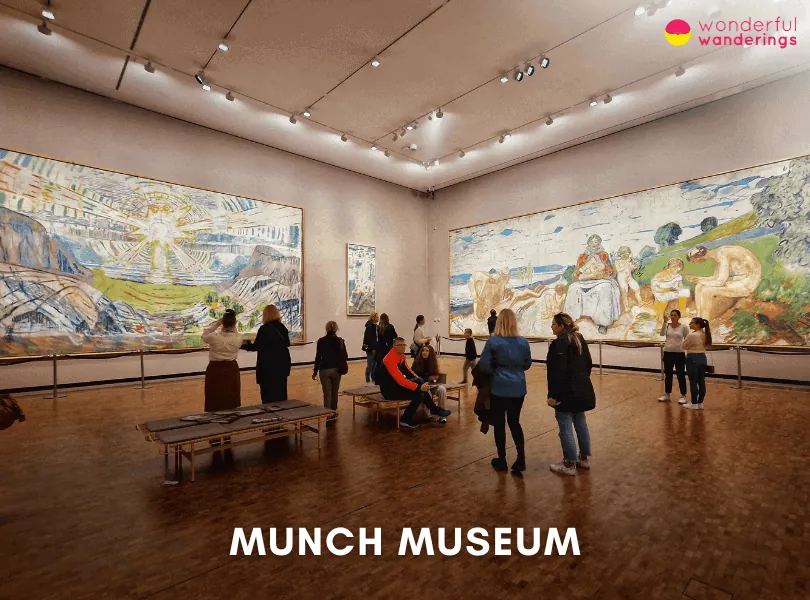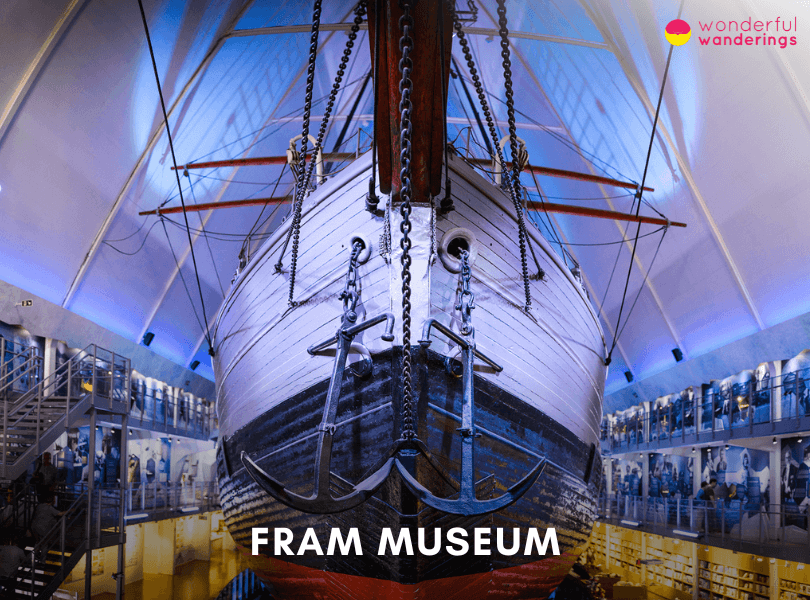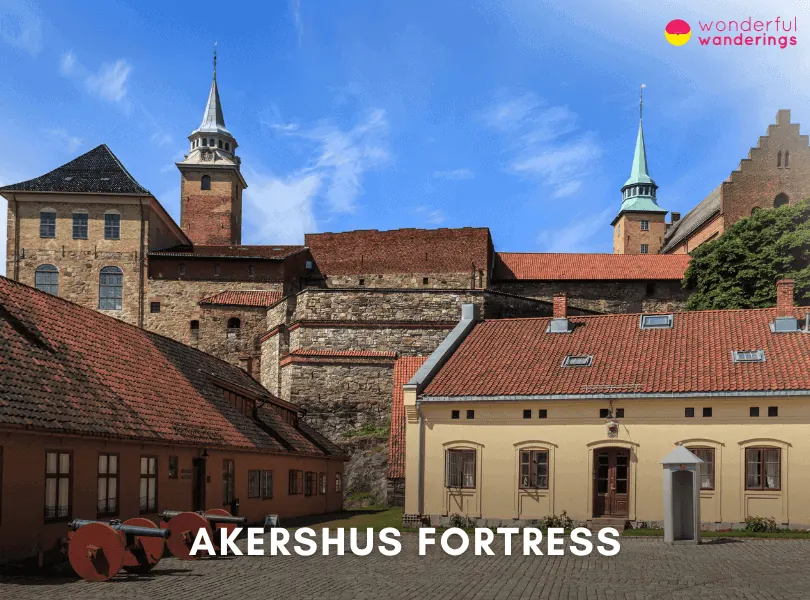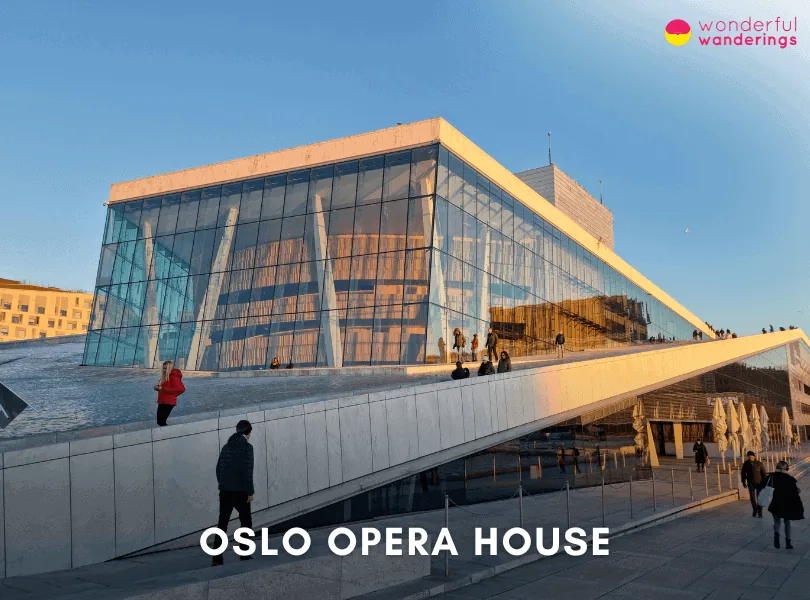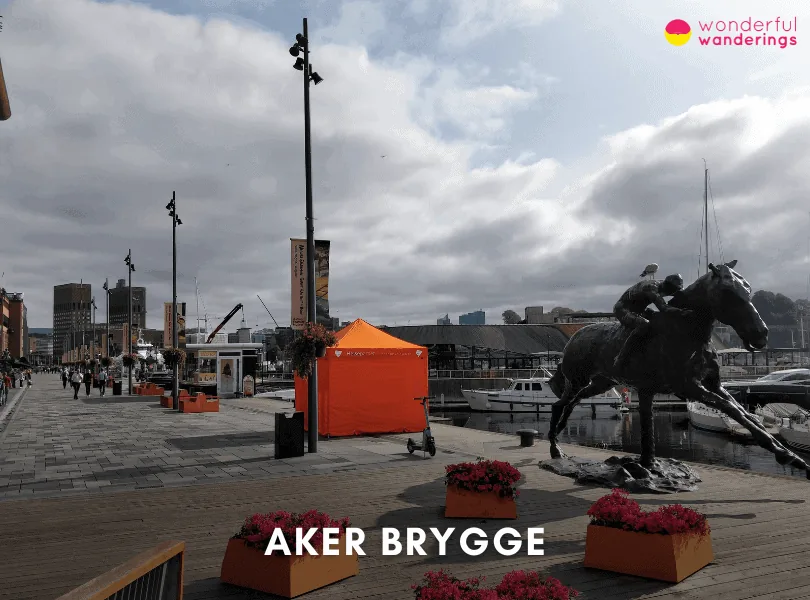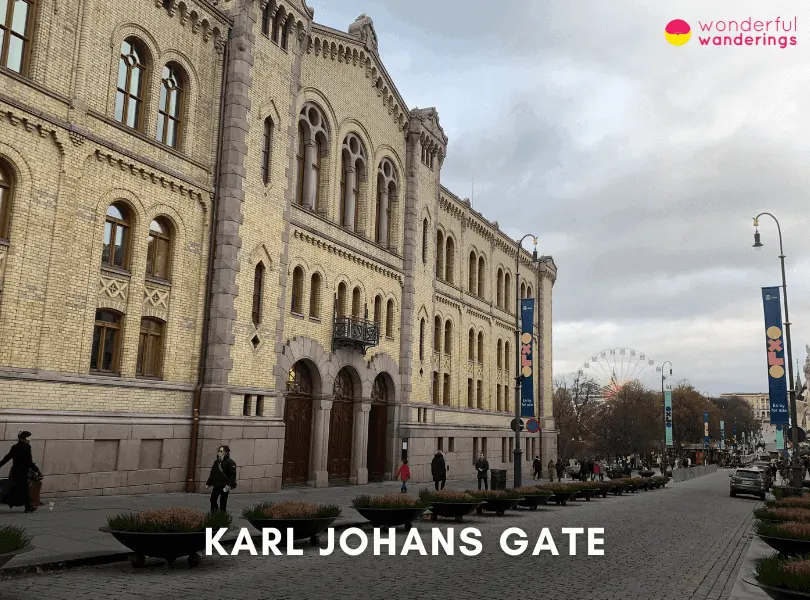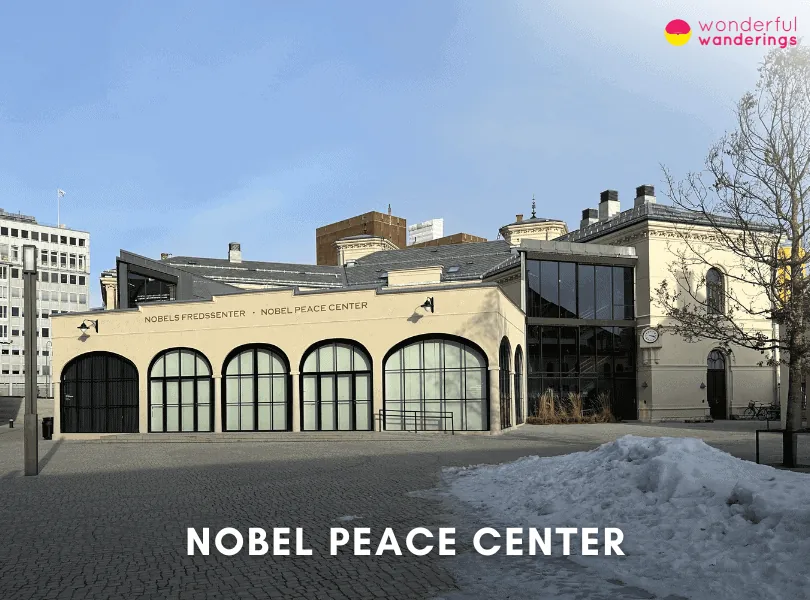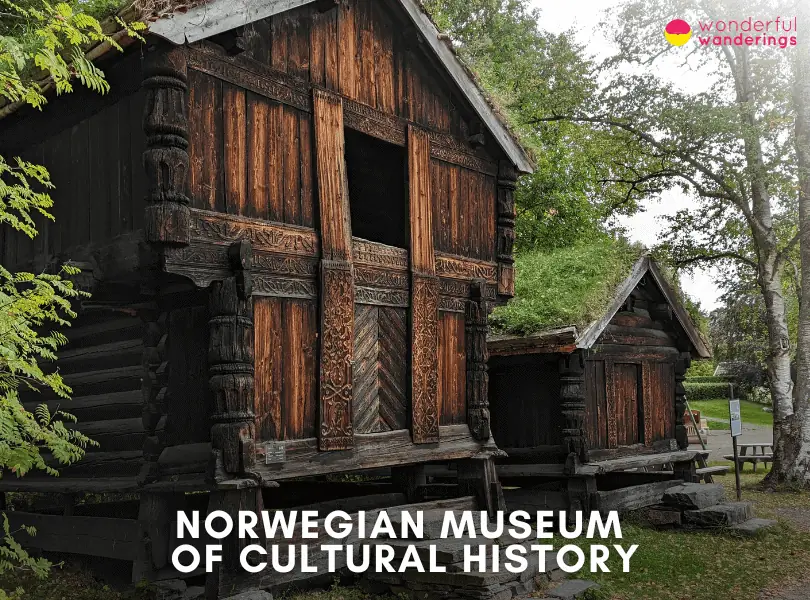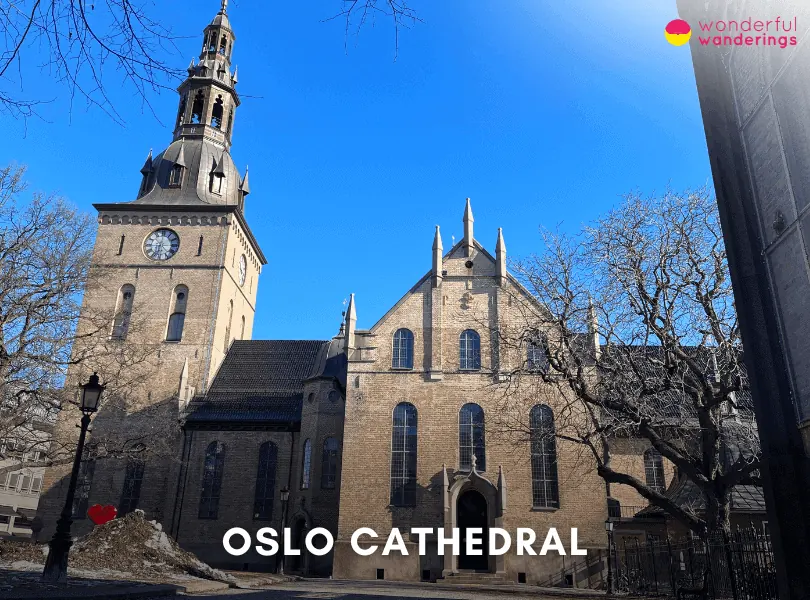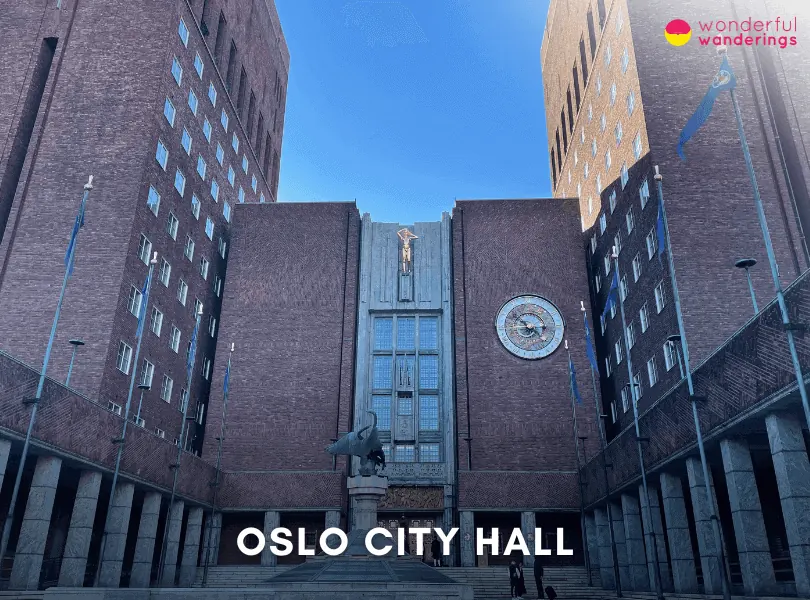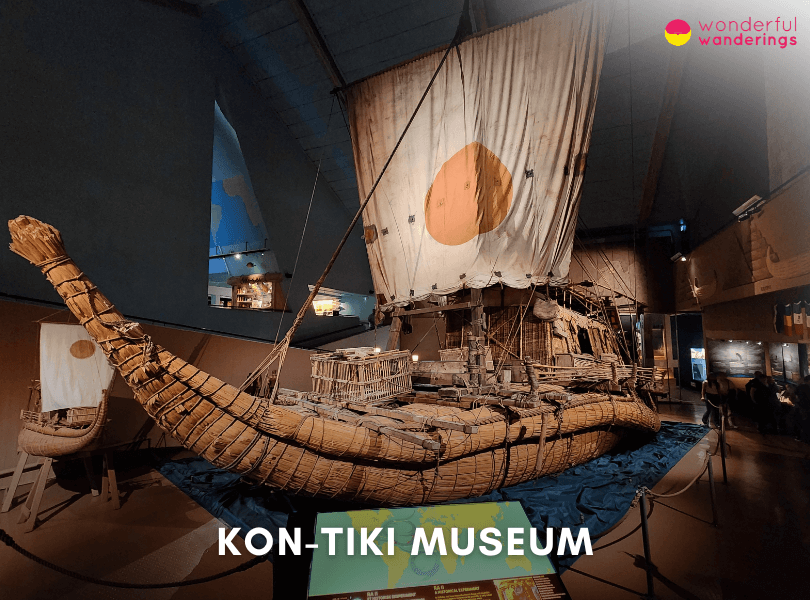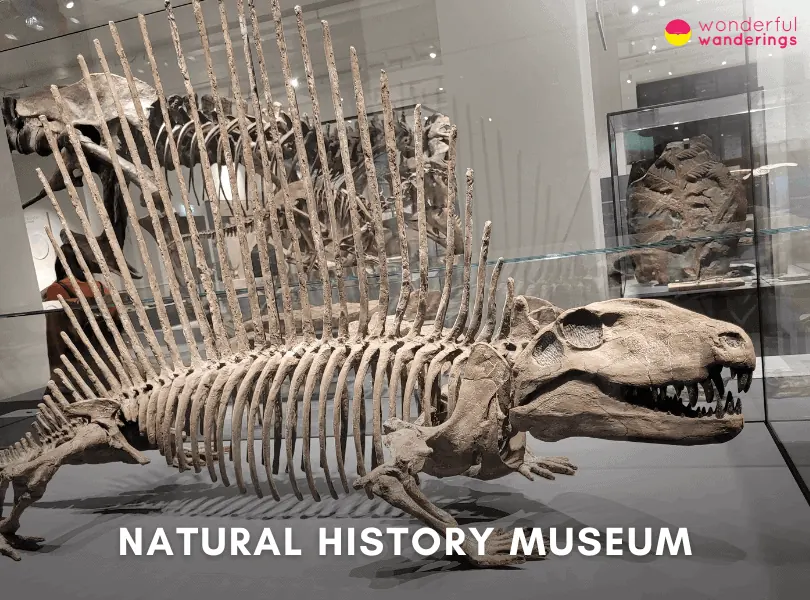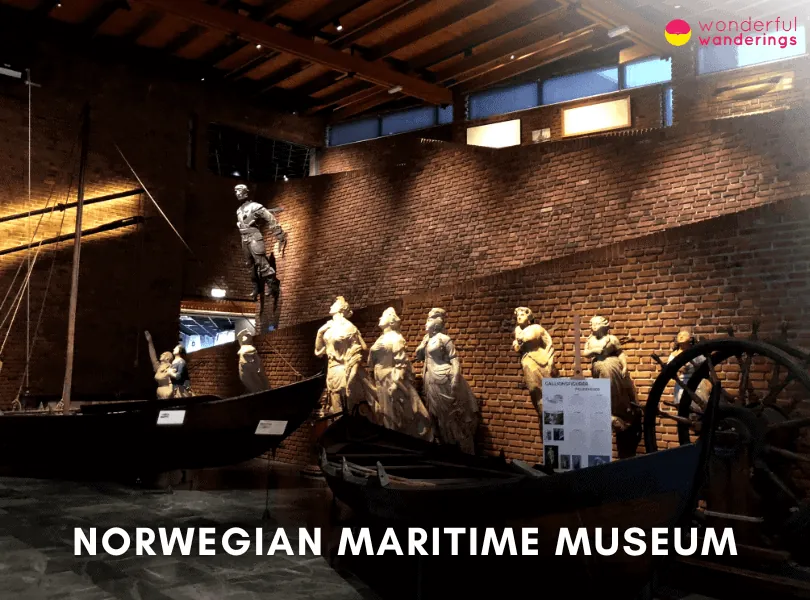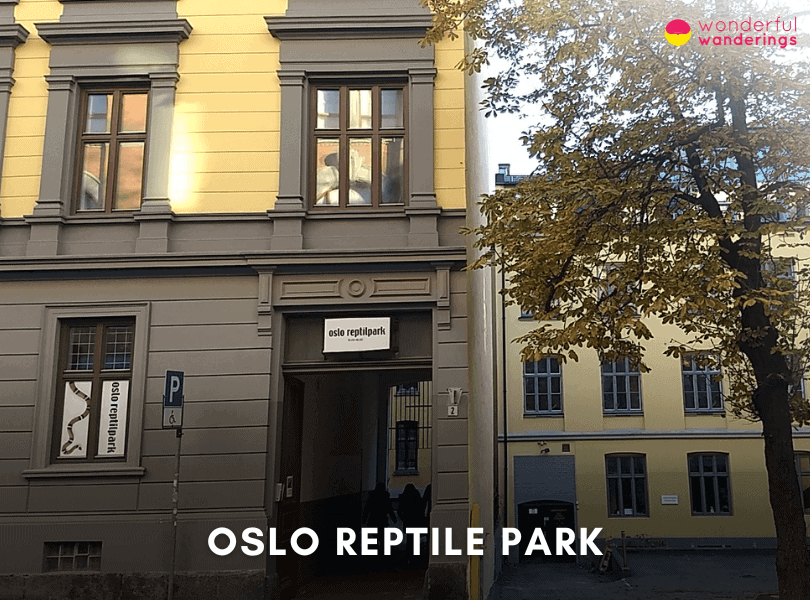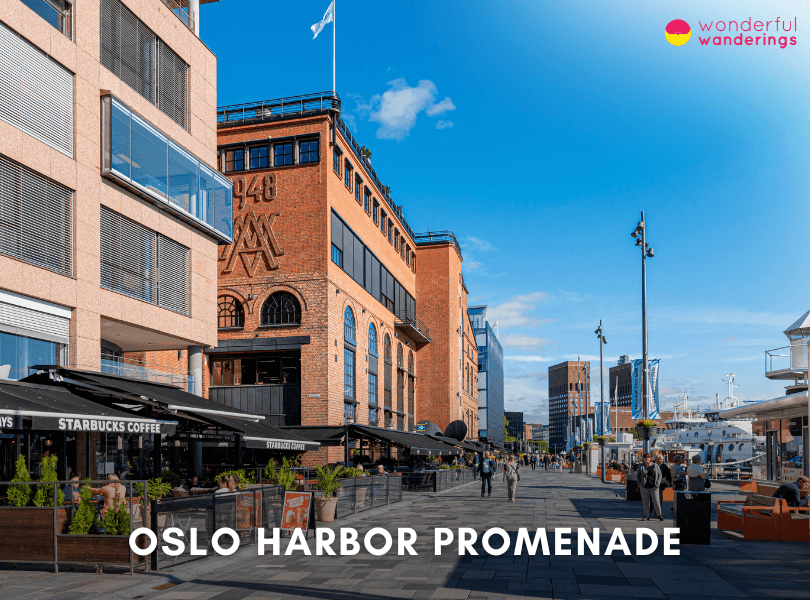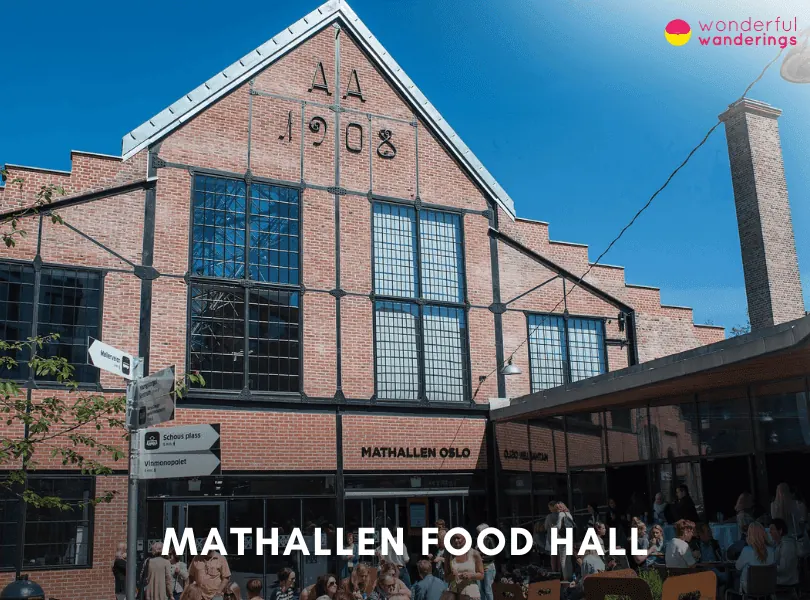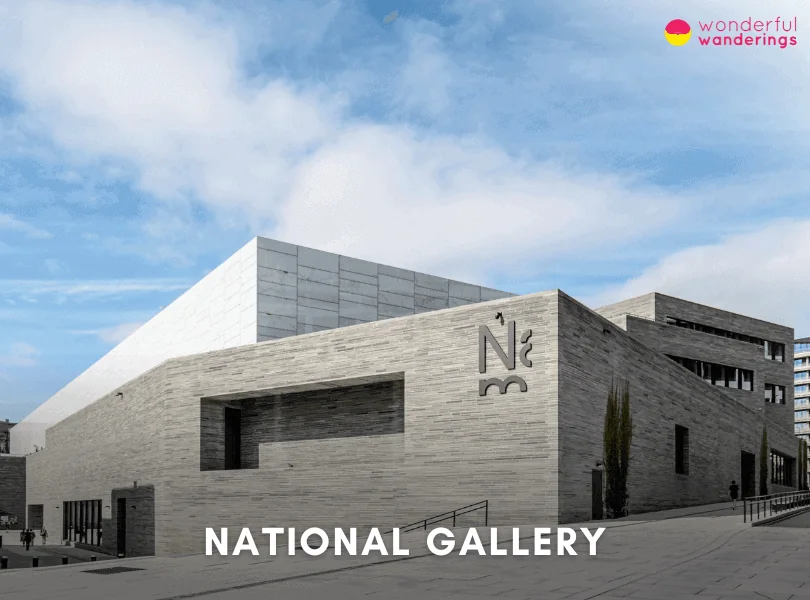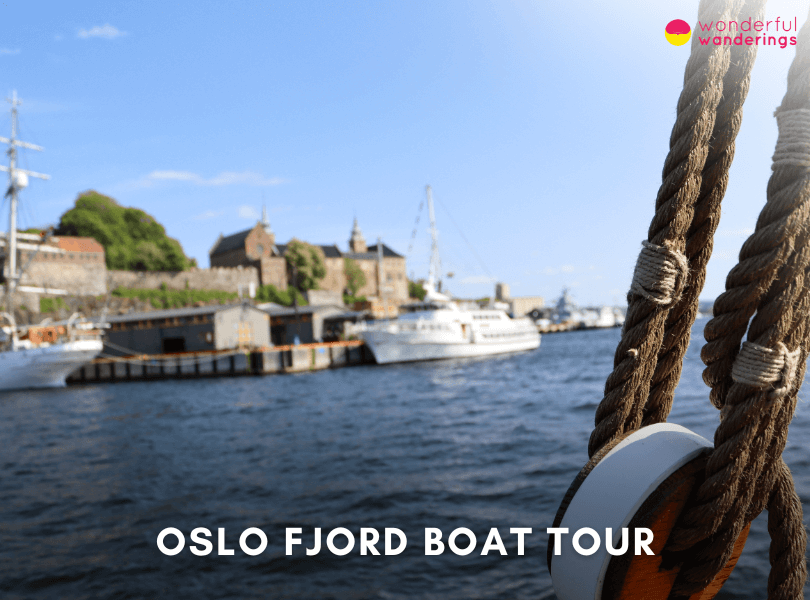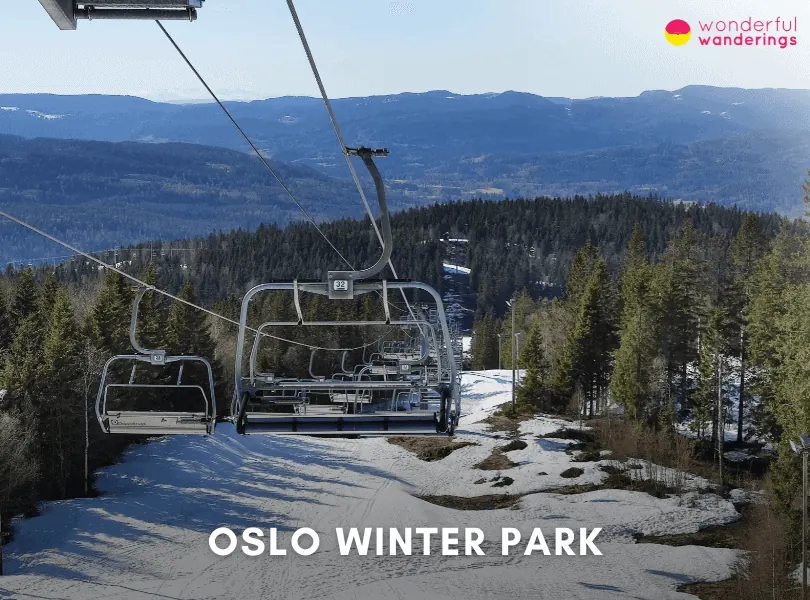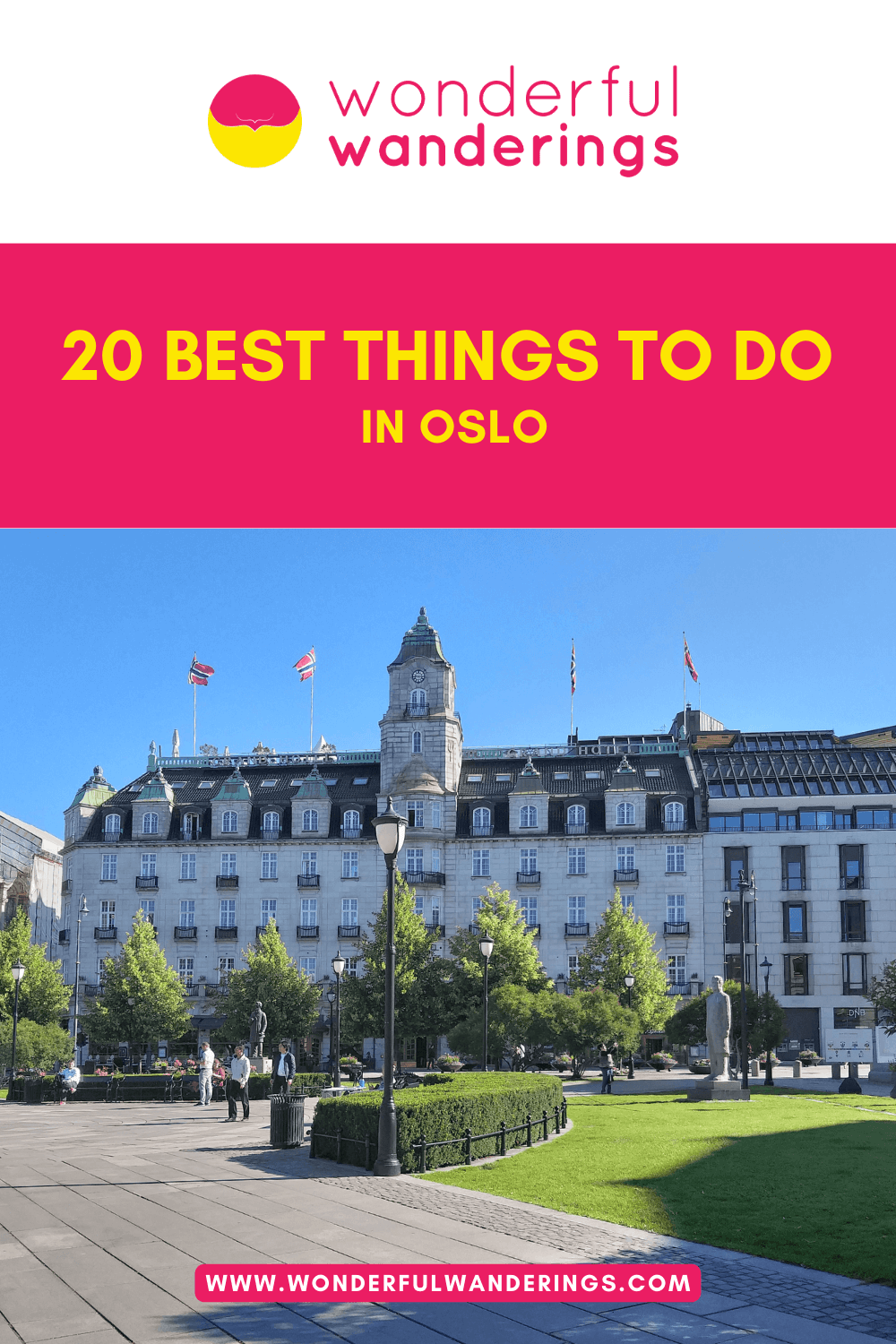Oslo, the capital city of Norway, is a captivating destination offering a rich mix of cultural, historical and recreational experiences. The city is adorned with notable attractions like the Vigeland Sculpture Park, home to more than 200 sculptures by Gustav Vigeland, including the famous Monolith and Angry Boy. Art enthusiasts can revel in the Munch Museum, which houses the largest collection of Edvard Munch’s artworks, including the iconic “The Scream”. For those interested in exploration history, the Fram Museum provides an immersive experience, showcasing the polar ship Fram used in Arctic and Antarctic expeditions.
The city’s history is palpably present in Akershus Fortress, a well-preserved medieval castle offering guided tours and harbor views. Modern architecture and cultural vitality are epitomized by the Oslo Opera House, the home of the Norwegian National Opera and Ballet, featuring a unique marble-clad roof accessible to the public. The Aker Brygge area, once an industrial shipyard, now buzzes with shops, restaurants and entertainment options, drawing both locals and tourists alike. Oslo’s main street, Karl Johans Gate, stretches from the central station to the Royal Palace and is lined with shops, cafes and significant buildings like the Parliament and National Theatre. The Nobel Peace Center, adjacent to Oslo City Hall, adds to the city’s intellectual and cultural landscape, celebrating the Nobel Peace Prize and its laureates.
Oslo’s offerings are not just limited to cultural and historical sites. The Norwegian Museum of Cultural History presents a unique open-air museum experience with over 160 historic buildings, while the Oslo Cathedral, dating back to the 17th century, showcases Baroque architecture. The city is conducive to exploration with its efficient public transport system, making it easy for visitors to navigate between attractions. While some attractions like the Vigeland Sculpture Park are free, others charge an admission fee, often with discounts available. Accommodation in Oslo caters to a range of preferences, from luxurious hotels to budget-friendly options, across different neighborhoods each offering unique experiences. The city’s culinary scene is a blend of traditional Norwegian cuisine and international flavors, with seafood being a highlight. The geographical setting of Oslo, with its proximity to the Oslofjord and surrounding forests, opens up a plethora of outdoor activities such as hiking, skiing and boating. Oslo’s parks and open spaces are perfect for family outings and relaxation.
Culturally significant, Oslo hosts prestigious events like the Nobel Peace Prize ceremony and various festivals, reflecting the city’s rich heritage. The art scene, both in museums and galleries, celebrates a mix of Norwegian and international artists. Oslo is generally an expensive city but it provides options for budget-conscious travelers. Oslo is a suitable travel destination in Norway for a wide range of travelers.
Listed below are the best things to do in Oslo.
- Vigeland Sculpture Park. Vigeland Sculpture Park in Oslo is the world’s largest sculpture park created by a single artist, Norwegian Gustav Vigeland. It is located in Frogner Park, it contains over 200 bronze, granite and iron sculptures depicting figures and human emotions. Vigeland’s iconic works include the Monolith, a 14-meter tower of intertwined bodies, the Angry Boy on the Bridge and the granite Fountain with babies. The sculptures are set amid green spaces and fountains. Admission is free, allowing visitors to immerse themselves in this iconic installation. Vigeland Sculpture Park is easily reached by public transit like the metro and tram.
- Munch Museum. The Munch Museum in Oslo, Norway houses the world’s largest collection of works by Norwegian expressionist painter Edvard Munch. Originally opened in 1963, the museum relocated in 2021 to a striking waterfront building designed by Spanish architects Estudio Herreros. It is located downtown just steps from public transportation, the Munch Museum offers timed tickets, tours, interactive exhibits and public programs related to Munch and modern art.
- Fram Museum. The Fram Museum in Oslo is dedicated to Norwegian polar exploration history. Visitors can board Fram and envision life aboard during groundbreaking expeditions to the Arctic and Antarctic from 1893-1912. The museum has detailed exhibits on explorers like Nansen, Amundsen and Sverdrup and offers a polar intro film, activities for families and discounted combo tickets with the Kon-Tiki Museum next door.
- Akershus Fortress. Akershus Fortress is a medieval castle and fortress complex located right on Oslo’s downtown harbor waterfront. Originally a royal residence, it later served military functions. The fortress has never been captured by enemy forces. Visitors today can take guided tours of the historic interior and grounds, enjoy panoramic harbor views from the towers and visit on-site museums. The easily accessible location near public transportation makes Akershus a popular tourist attraction. The fortress grounds are free to explore, while admission to the castle interior and museums costs around 100 NOK ($11) for adults. Reduced rates are available for students, youth and children.
- Oslo Opera House. The Oslo Opera House is the home of the Norwegian National Opera and Ballet. Its distinctive design features a marble-clad roof that doubles as a public plaza with panoramic city views. Located downtown near the central station and harbor, the Opera House offers guided tours, performances, restaurants and public art. Tours allow visitors to see backstage areas like the costume workshop and main stage. The metro and trams stop right outside, while the harbor promenade is just steps away. Attending a performance requires purchasing a ticket.
- Aker Brygge. Aker Brygge is a popular downtown Oslo waterfront area that attracts over 12 million annual visitors. Previously an industrial shipyard, it was redeveloped into a hub for shopping, dining, entertainment and tourism. Visitors can shop in the variety of boutiques, enjoy meals at one of 30 waterfront restaurants and bars, browse art galleries like the Astrup Fearnley Museum or book boat tours departing from the harbor. Located right in central Oslo near public transportation, the outdoor areas of Aker Brygge can be freely explored, while shops, attractions and restaurants have individual admission fees. Concerts and events happening right on the harborfront are often free.
- Karl Johans Gate. Karl Johans Gate is the main street running through central Oslo, lined with shops, restaurants, cafes and landmarks. It stretches from Oslo Central Station to the Royal Palace. The eastern pedestrian zone near the station has street performers and vendors, while further west is Eidsvolls Plass, a popular ice skating rink in winter. Major attractions include the Parliament Building, National Theatre, University of Oslo and Grand Hotel. Trams, buses and the train station provide easy access. The street itself is open to all with no admission fee, though individual attractions have their own entry costs. Karl Johans Gate offers a lively glimpse of Oslo.
- Nobel Peace Center. The Nobel Peace Center in Oslo is a museum showcasing the Nobel Peace Prize and its inspiring recipients. It is located next to Oslo City Hall, it contains interactive exhibits bringing to life the history of Alfred Nobel and the work of over 100 Peace Prize laureates like Martin Luther King Jr. and Malala Yousafzai. Highlights include the annual Nobel Field exhibit unveiling that year’s winner and the Passage of Honor honoring the most recent laureate. Enjoying an extremely convenient downtown location near public transportation, general admission is 140 NOK ($15) for adults with discounted rates available. The Nobel Peace Center offers guided tours that are included with all tickets.
- Norwegian Museum of Cultural History. The Norwegian Museum of Cultural History is an expansive open-air museum on the Bygdøy peninsula containing over 160 historic buildings relocated from across Norway. The museum is easily reached in 15 minutes by bus or ferry. General admission is 180 NOK ($19) for adults with discounted rates available. Guided tours are included and visitors can involve themselves in different periods of Norwegian history and culture at this large museum spanning over 40 hectares.
- Oslo Cathedral. Oslo Cathedral, formerly known as Our Savior’s Church, is the main church of the Church of Norway Diocese located in central downtown Oslo near the Parliament. Originally constructed in 1694-1697, the Baroque-style cathedral contains an ornate interior with a towering organ, ceiling murals and original 17th century decor. Visitors can attend Norwegian language church services on Sundays, concerts or book advance guided tours for insights on the architecture. There is no admission fee to enter Oslo Cathedral and view the interior, special events and tours have standard ticket pricing.
1. Vigeland Sculpture Park
Vigeland Sculpture Park, known as Vigeland Park or Frogner Park, is a famous sculpture park located inside Nobels gate 32, 0268 Oslo. It contains over 200 sculptures by Norwegian artist Gustav Vigeland (1869-1943), making it the world’s largest sculpture park created by a single artist. The park is Vigeland’s life work and took several decades to complete, with installation occurring mainly from the 1930s to 1940s. The sculptures depict human figures, relationships and emotions rendered in bronze, granite and wrought iron. The most iconic sculpture is the Monolith, a 14-meter tall tower composed of 121 intertwined human bodies rising towards the sky.
At Vigeland Sculpture Park, visitors can take self-guided or guided tours to view and learn about Gustav Vigeland’s sculptures depicting the circle of life, walking along the park’s 850-meter main axis, visitors encounter works like the famous Angry Boy on the Bridge, the granite Fountain with its babies and the towering Monolith. The park contains over 200 bronze, granite and iron sculptures in total. Placards provide details about selected artworks. Visitors can also explore the green spaces, fountains and footpaths connecting the sculptures and take in views of the city from the park’s hilltop location. The on-site Vigeland Museum offers more sculptures by Vigeland, exhibits about his life and insight into the park’s creation. Special events like concerts occasionally take place in the park.
Vigeland Sculpture Park is located in the Frogner Park area of Oslo, about 3 km (1.9 miles) northwest of the city center. The park is easily accessible by public transportation. Visitors can take the subway to Majorstuen Station, an underground station just 500 meters (0.3 miles) south of the park entrance. Another option is tram line 12, which stops at Vigelandsparken, right outside the sculpture park. Visitors can also take bus line 20 from downtown Oslo to the Vigelandsparken stop.
Admission to Vigeland Sculpture Park is completely free. Visitors can explore the entire sculpture park without any entrance fee. This allows everyone to access these amazing works of public art at no cost. While admission is free, visitors are welcome to leave donations if they wish to help support preservation of the park. Nearby attractions like the Vigeland Museum do charge admission fees – the museum is 100 NOK for adults and 50 NOK for students/seniors (£8/$10). However, the sculpture park itself can be enjoyed without any admission cost. The free admission continues that mission today by allowing both locals and tourists to immerse themselves in this iconic sculpture installation.
2. Munch Museum
The Munch Museum, marketed as MUNCH since 2020, is an art museum in Tøyengata 53, 0578 Oslo, Norway. It is located right on the waterfront in the Bjørvika area of downtown Oslo, close to the central train station, the Oslo Opera House and the Barcode business district. The museum first opened in 1963 in the neighborhood of Tøyen to house Munch’s collection, which was bequeathed to the city of Oslo upon his death. In 2021, the museum moved to a brand new, purpose-built facility on the Oslo waterfront designed by Spanish architecture firm Estudio Herreros.
Visitors to the Munch Museum in Oslo can view and appreciate the massive collection of artworks by Norway’s most famous painter, Edvard Munch. The museum contains over half of all the paintings Munch produced in his lifetime, including his most iconic pieces like The Scream, Madonna, The Dance of Life, The Sick Child and The Sun, which are always on display. The museum offers guided tours in English that provide insight into Munch’s life and artistic practice. The museum has a gift shop with books, prints and souvenirs as well as a restaurant and cafe on site. Film screenings, concerts, lectures and other public programming related to Munch and modern art take place regularly.
The Munch Museum is conveniently located in downtown Oslo, just steps from public transportation. The easiest way to reach the museum is by taking the subway; the Tøyen station on line T-bane 3 is a 5 minute walk or 0.3 kilometers (0.2 miles) from the museum entrance. Alternatively, visitors can take bus line 20 or 54 directly to the Munch Museum stop, which lets off right in front of the museum entrance. Taxis and rideshares from anywhere in the downtown Oslo area can also provide quick transport directly to the museum entrance on Tøyengata street. Oslo is very walkable, so visitors staying in hotels near the city center may choose to reach the museum by foot.
The Munch Museum offers timed entry tickets that provide access to all of the museum’s exhibitions. Ticket prices are 160 NOK (17$, 14£) for adults, 100 NOK (11$, 9£) for visitors under age 25 and free for children under 18. Special rates are available for students, seniors, groups and families. Members of the museum receive free admission for themselves and a guest. Visitors should book timed tickets in advance online to guarantee entry, as the museum has limited capacity. Tickets can be purchased on-site at the admissions desk, but may sell out, especially during peak times. The museum is open 5 days a week, from Wednesday to Sunday 10am to 5pm (open until 9pm on Wednesdays and Saturdays in summer).
3. Fram Museum
The Fram Museum is a museum dedicated to showcasing Norwegian polar exploration history. It is located on Bygdøynesveien 36, 0286 Oslo, situated on the Bygdøy peninsula, just a short distance from downtown Oslo. The museum’s main attraction is the original polar exploration ship Fram. The 39-meter schooner Fram was specially constructed to withstand being frozen into polar ice and was used on several groundbreaking expeditions to the Arctic and Antarctic from 1893 to 1912. Another highlight is the polar exploration vessel Gjøa, the first ship to navigate the Northwest Passage, on display as well.
Visitors to the Fram Museum can explore the polar ship Fram and learn about Norwegian polar exploration history. The main attraction is boarding the original Fram vessel and walking throughout its decks, cabins, cargo hold and engine room. Visitors can envision life aboard the ship during years trapped in Arctic and Antarctic ice. Visitors can view equipment and artifacts actually used on Fram’s expeditions, like navigation tools, skis, cooking gear and more. The museum has detailed interpretive displays about the groundbreaking polar expeditions Fram was involved in, like the quests to reach the North Pole, South Pole and navigate the Northwest Passage. Visitors learn about famous explorers like Fridtjof Nansen, Otto Sverdrup and Roald Amundsen and the challenges they faced. Exhibits showcase historic photos, maps, journal entries and other artifacts. Visitors can board the Gjøa, the first ship to sail through the Northwest Passage and see exhibits on polar wildlife like penguins and polar bears.
The Fram Museum can easily be reached via public transportation. Visitors can take bus number 30 from the city center directly to the Fram Museum stop right outside the museum entrance. The bus ride takes around 15 minutes and covers a distance of 5 km (3 miles). During summer months, an additional option is taking the ferry from the City Hall pier to the Bygdøy peninsula. The ferry dock is just across the street from the museum. Another scenic transit choice is the No. 12 tram which has a stop 500 meters (0.3 miles) from the museum. Visitors can take a taxi or rideshare service directly to the Fram Museum entrance.
The Fram Museum offers individual and group tickets with discounted rates available. General admission for an adult costs 140 NOK (15$, 12£). Reduced prices apply for students and seniors at 100 NOK (11$, 9£), while children under 18 enter for free. Special group rates for 15 people or more are 100 NOK per person. Family tickets for 2 adults and up to 5 children cost 300 NOK €26 ($28, £21) in total. Combo tickets that cover both the Fram Museum and neighboring Kon-Tiki Museum are available at a bundled discount. For example, an adult combo ticket for both museums is 250 NOK (27$, 22£). Discounted combo prices apply for seniors, students and families as well.
4. Akershus Fortress
Akershus Fortress is a medieval castle and fortress complex situated in 0150 Oslo, Norway. It is located in downtown Oslo right on the harbor waterfront. The fortress shares space with Norway’s Armed Forces, housing military offices, the Ministry of Defense and other government offices. Akershus has never been captured by a foreign enemy in battle. It initially functioned as a royal residence alongside its defensive purpose. Later it served military functions like housing garrison troops, weapons and ammunition. The fortress complex expanded over the centuries through the 17th century. Notable rulers like King Christian IV expanded Akershus into a Renaissance castle and fortress. Akershus Fortress address is 0150 Oslo, Norway. It is located in downtown Oslo right on the harbor waterfront.
Visitors to Akershus Fortress today can take guided tours of the castle interior, stroll the grounds and fortifications and visit the on-site museums. Guided tours showcase the fortress’ evolution over seven centuries, from medieval castle to Renaissance palace to military base. Tours allows visitors to see historic halls, chambers, church and castle ruins. Visitors can attend events like summer concerts or ceremonies held on the fortress grounds. There are cafes and restaurants on site. The upper levels of fortified towers provide panoramic views over Oslo harbor.
Akershus Fortress enjoys an easily accessible location right in central Oslo. It sits on the waterfront just steps from public transportation. The nearest tram stop is Kontraskjæret, just 0.2 km (0.1 miles) north of the fortress entrance. From the Oslo Central Train Station, Akershus Fortress is 1.3 km (0.8 miles) away, about a 15 minute walk. Visitors can take the subway which has a station at Stortinget just 0.7 km (0.4 miles) from the fortress. Buses also stop closeby on Vippetangen and Jernbanetorget which are 0.6 km (0.4 miles) and 0.3 km (0.2 miles) away. The downtown location makes Akershus Fortress walkable from hotels or neighborhoods across central Oslo. Ferries and tourist boats dock along the waterfront promenade at Vippetangen, right next to Akershus.
The grounds of Akershus Fortress can be explored for free but there is an admission charge to enter the castle interior and on-site museums. Entry to Akershus Castle costs 100 NOK (11$, 8£) per adult. Reduced prices apply for students at 60 NOK (6$, 5£) and youth ages 6-18 at 40 NOK (4$, 3£). Children under 6 enter Akershus Castle for free. Combo tickets are available that include the Armed Forces Museum and Resistance Museum for a discounted rate.
5. Oslo Opera House
The Oslo Opera House is the home of the Norwegian National Opera and Ballet and the national opera house of Norway. It is located in Kirsten Flagstads Plass 1, 0150 Oslo, Norway. The design features a sloping roof covered in Italian marble that doubles as an open public plaza where visitors can walk up and take in panoramic views of the city and fjord. The interior contains three performance spaces including the main auditorium seating 1,364, as well as rehearsal rooms, workshops and restaurants.
Visitors to the Oslo Opera House can take guided tours of the building’s interior and backstage areas, attend a performance by the Opera or Ballet company, dine at one of the on-site restaurants, explore the public art installations or simply walk on the roof and take in views of Oslo. Guided tours allow visitors to see spaces like the main stage, costume workshop and scene painting room. Tours run daily in English and other languages. Visitors can experience world-class opera, ballet, concerts and dance at the house’s three theaters year-round. The Opera House has a seafood restaurant, cafe, bars and gift shop on site as well.
The Oslo Opera House enjoys a convenient downtown location near public transportation. It is just steps from the harbourfront promenade and a 5 minute walk or 0.3 km (0.2 miles) from the central train station. Visitors can take the metro directly to the Opera House stop just across the street. Trams and buses stop right nearby on Jernbanetorget just 0.2 km (0.1 miles) away. The Opera House is walkable from downtown hotels and sights, about 1 km (0.6 miles) from the main Karl Johans Gate pedestrian street. Ferries and tourist boats dock along the waterfront promenade right next to the Opera House.
The Oslo Opera House building is free to enter and explore. Visitors can walk on the roof, view the public artworks and architecture at no cost. Discounted tour rates are available for students, children, seniors and groups. Attending a performance in one of the Opera House’s theaters requires purchasing a ticket, with prices varying by seat location and show.
6. Aker Brygge
Aker Brygge is a popular waterfront area located in Aker Brygges gt. 3, 0250 Oslo, situated right on the waterfront in the central downtown area of Oslo. It attracts over 12 million visitors annually and is a popular gathering place for both Oslo residents and tourists. It was previously an industrial shipyard area, but was redeveloped in the 1980s into a hub for shopping, dining, entertainment and tourism. Aker Brygge stretches along the harbor and contains over 60 shops, 30 restaurants and bars, art galleries, a cinema, apartments and office buildings.
At Aker Brygge, visitors can shop in the variety of boutiques selling clothing, art, Norwegian design items, accessories and more. There are many waterfront restaurants and bars where visitors can enjoy a meal or drink while taking in views of the Oslofjord. Art galleries like Gallery Fine Art and Pushwagner Gallery offer the chance to browse Norwegian artwork. Visitors can explore the Astrup Fearnley Museum of Modern Art for a collection of contemporary artworks. There are often events like concerts, food festivals and markets happening right on the waterfront. Visitors can book boat tours that depart from the harbor, offering a chance to get out on the fjord.
Aker Brygge is located right in downtown Oslo, so it is very easy to reach via public transportation. The most direct public transit option is to take the metro to the Nationaltheatret station, which is just 350 meters or a 4 minute walk from Aker Brygge. Visitors can take the metro, tram or bus to the Jernbanetorget stop, which is only 500 meters or a 6 minute walk away. Visitors staying in downtown hotels can easily walk, as Aker Brygge is centrally situated.
The Aker Brygge area is completely free and open to the public, so there is no admission cost to enter and explore the waterfront. Visitors can wander along the harbor promenade, view the scenery and architecture, people watch or relax on benches at no cost. The shops, restaurants, bars and some attractions like the Astrup Fearnley Museum do have individual admission fees, but the outdoor areas of Aker Brygge can be enjoyed without any admission cost. There are often free concerts, performances, markets and events happening right on the harborfront that are open to all without any admission fee.
7. Karl Johans Gate
Karl Johans Gate is the main street running through downtown in Sentrum, 0152 Oslo. It spans several neighborhoods in central Oslo including Vika, Sentrum and Stortingsgata. Karl Johans Gate is lined with shops, restaurants, cafes, hotels and cultural attractions. The street is home to landmarks like the Parliament Building, National Theatre, University of Oslo and Grand Hotel. The eastern end near the train station is a lively pedestrian zone with street performers and vendors. Further west is Eidsvolls Plass with its trees, lawns and fountains. During winter this area becomes a popular ice skating rink. The street ends at Palace Park surrounding the Royal Palace.
Visitors to Karl Johans Gate can shop at the stores and boutiques lining the street, like clothing, souvenir and design shops. There are many restaurants, cafes and bars where one can stop for a meal or drink. Street performers and musicians entertain passersby, especially in the pedestrian area near Oslo Central Station. Major attractions along Karl Johans Gate include the Royal Palace which offers tours, the Parliament Building or Stortinget where visitors can take a guided tour and the National Theatre which hosts plays and events. The University of Oslo is located on Karl Johans Gate. Visitors can explore the historic campus and its museums. The street is a sight itself with striking architecture.
Karl Johans Gate is centrally located in downtown Oslo making it easy to reach by public transportation. The Oslo Central Station is at the western end of the street. Visitors arriving by train can simply exit the station and walk 300 meters east onto Karl Johans Gate. From Oslo Gardermoen Airport, the Flytoget express train takes only 19 minutes to Oslo Central Station. Trams 11, 12, 13, 17, 18 all stop at the National theater as well. Buses including 31, 34, 37, 54 and many more stop along or near Karl Johans Gate. Most city bus routes pass close to the street given its central location. Karl Johans Gate itself is a public street open to all, so there is no admission cost to walk along it or view the sights. Shops, restaurants, attractions and public transportation within the area will have their own respective admission costs or fares.
8. Nobel Peace Center
The Nobel Peace Center is a museum dedicated to showcasing the Nobel Peace Prize and the inspiring stories of its recipients. Located in Brynjulf Bulls Plass 1, 0250 Oslo, Norway. It is centrally right next to Oslo City Hall, where the annual Nobel Peace Prize award ceremony takes place every December 10th. The Nobel Peace Center is situated in Oslo’s former West Railway Station building from 1872 overlooking the harbor and Oslofjord. It contains advanced interactive technology and installations that bring to life the history of Alfred Nobel and the work of over 100 Nobel Peace Prize laureates. Some highlights include the annual Nobel Field exhibit unveiling that year’s Peace Prize winner, the Passage of Honor showcasing the most recent laureate, a commissioned mural by Chris Ofili and flexible gallery spaces for temporary exhibitions.
Visitors to the Nobel Peace Center can take in the museum’s permanent and temporary exhibitions to learn about the history of the Nobel Peace Prize and the causes promoted by its many esteemed laureates. Interactive displays explore the lives of over 100 recipients like Martin Luther King Jr., Mother Teresa, Nelson Mandela and Malala Yousafzai. The annual Nobel Field exhibit unveils that year’s winner through immersive media. Visitors can view artifacts like medals, photos, letters and films related to the Peace Prize’s impact. Special temporary exhibitions dive deeper into certain themes or laureates. Guided tours are available to provide extra insight and context. There are regular events like lectures, concerts and discussions centered around peace, human rights and conflict resolution. Visitors can reflect on global issues in the on-site Peace Library.
The Nobel Peace Center enjoys an extremely convenient location right in downtown Oslo near multiple public transportation options. It is just 100 meters or a 2 minute walk from the Aker Brygge tram stop, which is served by line 12. The Dokkveien bus stop on lines 32, 33, 54, 81 and 169 is 100 meters or 2 minutes away. It is 200 meters or a 3 minute walk from the Aker Brygge ferry terminal. The Nobel Peace Center offers individual and group admission tickets with discounted rates available. General admission for adults is 140 NOK (15$, 12£). Reduced prices apply for students and seniors at 100 NOK (11$, 9£). Children under age 18 enter for free. Guided tours are included with all ticket types. Special group rates for 15+ people are 100 NOK per person. Combo tickets bundled with other Oslo museums are offered at a discount. Visitors should purchase timed entry tickets online in advance for a specific date and time slot, as availability is limited each day. Tickets can be purchased on-site based on remaining availability. Oslo Passes that cover admission fees are another option. The Nobel Peace Center is open daily apart from some holidays.
9. Norwegian Museum of Cultural History
The Norwegian Museum of Cultural History or Norsk Folkemuseum is an expansive open-air museum situated on Museumsveien 10, 0287, the Bygdøy peninsula in Oslo, Norway. Founded in 1894, it is one of the world’s oldest and largest open-air museums, spanning over 40 hectares. The museum contains over 160 historic buildings that have been relocated from towns and rural areas across Norway to recreate past eras from medieval stave churches to 19th century farms to a 20th century city neighborhood, the museum depicts various periods in Norwegian history to showcase the evolution of building techniques, lifestyles, clothing, crafts and more. The museum has indoor exhibits featuring folk art, Sami culture, national costumes, silver and church artifacts. Demonstrations, activities and special events run throughout the year.
At the Norwegian Museum of Cultural History, visitors can see themselves in various eras of Norwegian history and culture. The open-air museum contains over 160 buildings from across Norway representing architectural styles and lifestyles from the Middle Ages to present day. Visitors can explore the exteriors and interiors of structures like medieval stave churches, 19th century farms, village shops, an old town and more. Costumed performers demonstrate traditional crafts and reenact scenes from daily life during summer months. The museum offers guided tours plus activities like baking traditional lefse flatbread or folk dancing year-round. Temporary exhibitions highlight special themes, artists or aspects of cultural history as well. The museum has a gift shop with traditional handicrafts, books and souvenirs for sale and two cafes on site.
The Norwegian Museum of Cultural History can easily be reached in around 15 minutes via public transportation. Visitors can take bus number 30 from downtown Oslo directly to the Folkemuseet bus stop situated right outside the museum entrance. The bus ride covers a distance of 5 km (3 miles). Another option during summer months is to take the ferry from the City Hall pier to the Bygdøy peninsula. The ferry dock sits just 500 meters (0.3 miles) across the street from the museum. Tram number 12 also stops around 1 km (0.6 miles) away.
The Norwegian Museum of Cultural History offers individual and group tickets with discounted rates available. General admission for adults is 180 NOK (19$, 15£). Reduced prices apply for students and seniors at 140 NOK (15$, 12£), while children under 18 enter for free. Guided tours are included with all tickets. Special group rates for 15+ people are 140 NOK per person. Family tickets for 2 adults and up to 5 kids are 460 NOK total. Combo tickets bundled with other Oslo museums are offered at a discount. Visitors should purchase timed entry tickets online in advance for a specific date, as availability is limited each day. Tickets can be purchased on-site based on remaining availability.
10. Oslo Cathedral
Oslo Cathedral, formerly known as Our Savior’s Church, is the main church for the Church of Norway Diocese of Oslo and the parish church for downtown Oslo. It is located in Karl Johans gate 11, 0154 Oslo, situated right on Stortorvet square in central downtown Oslo near the Parliament building. The current cathedral building dates back to 1694-1697 and stands on Stortorvet square in central Oslo. It was constructed in the Dutch Baroque style with a single spire tower. Over its history, Oslo Cathedral has undergone renovations and reconstructions, most notably in the 1850s when it obtained its current tower and spire. The original Baroque interior was replaced with Neo-Gothic decor during that time. Major restorations returned it to its authentic Baroque style by the 1950s. The Norwegian royal family uses Oslo Cathedral for events like weddings and funerals.
Visitors to Oslo Cathedral can attend a Norwegian language church service, particularly the high mass held on Sundays. The cathedral frequently hosts musical concerts as well that are open to visitors. Guided tours provide insights into the architecture and decor – these must be booked in advance. Visitors can admire features like the elaborate pulpit, towering organ pipes, extravagant ceiling murals and stained glass windows. The baptismal font and altarpiece are originals from the 17th century construction. Visitors can stroll through the open-air church grounds and explore the curved bazaar building adjoined to the cathedral containing small shops and cafes. Photographing the exterior Baroque facade is popular. The cathedral often holds public special events like concerts, lectures or ceremonies.
Oslo Cathedral’s convenient central location makes arriving straightforward via public transportation. The closest metro station is Stortinget, just a 9 minute, 0.7 km (0.4 mile) walk away. Visitors can easily access the cathedral by taking tram lines 11, 12 or 13 to the Stortorvet stop situated right in front of Oslo Cathedral after a brief 4 minute, 0.3 km (0.2 mile) tram ride. Several buses including lines 31, 34 and 37 stop at nearby locations just a 5-7 minute walk from the cathedral entrance. Oslo Central Station is a mere 12 minute, 1 km (0.6 mile) walk away for those arriving by train.
There is no admission fee to enter Oslo Cathedral itself or walk around its public outdoor grounds. Attending a regular church service or ceremony within is free and open to all visitors regardless of religious affiliation. Tour fees support maintenance and operations of this historic cathedral. So visitors can freely enter to see the ornate interior and appreciate the architecture without any cost, but special events and tours do have standard ticket pricing.
11. Oslo City Hall
Oslo City Hall or Oslo rådhus in Norwegian is the municipal building located at Oslo City Hall is 0037. It is situated overlooking the Oslofjord inlet, Oslo City Hall was constructed between 1931-1950 in the Functionalist architectural style. Designed by Norwegian architects Arnstein Arneberg and Magnus Poulsson, the distinctive red brick building features two towers, the tallest reaching 66 meters. The eastern tower contains a 49-bell carillon. Inside, the grand halls are adorned with murals and artworks by major Norwegian artists like Henrik Sørensen depicting scenes from Norwegian history and culture. Oslo City Hall is perhaps best known as the site of the annual Nobel Peace Prize ceremony every December.
Visitors to Oslo City Hall can take a free guided tour offered in multiple languages during summer months. Tours allow visitors to see historic halls with murals and artworks depicting Norwegian history and culture. The tours access the tower with the 49-bell carillon. Visitors can attend political meetings or ceremonies like the annual Nobel Peace Prize award held in the grand halls. The building contains the City Hall Art Gallery which hosts temporary exhibitions often focused on contemporary Norwegian artists. Visitors may encounter musicians performing outside the open entrance. The harborfront area outside hosts events like concerts or markets. While most of the interior is now office space, visitors can still access the historic halls to appreciate the ornate murals and artwork through a guided tour.
Oslo City Hall is located right in downtown Oslo making it easy to reach via public transportation. The central train station is just a 12 minute, 1 km (0.6 mile) walk away along the harbourfront promenade. The Nationaltheatret metro and tram station is a 6 minute, 0.5 km (0.3 mile) walk from the entrance. Visitors can take tram lines 12, 13 or 19 which stop right outside the City Hall after a brief 5 minute ride. Buses 30, 31, 32, 81 and more stop just across the street. The downtown location makes Oslo City Hall very walkable from hotels, landmarks and neighborhoods across central Oslo. Ferries and tourist boats docking along the waterfront are also just steps away from Oslo City Hall.
There is no admission fee to enter Oslo City Hall itself. Visitors can freely stroll the courtyard, view the architecture and appreciate the harbor views at no cost. Guided tours of the interior historic halls and tower during summer months do have a fee of 100 NOK (11$, 8£) per adult. Discounted tour rates are available for students, seniors and children. Attending a ticketed event like a concert in the grand halls requires purchasing a ticket for that specific performance.
12. Kon-Tiki Museum
The Kon-Tiki Museum is dedicated to the legendary Norwegian explorer Thor Heyerdahl and houses his famous Kon-Tiki raft along with other vessels and artifacts from his expeditions. It is situated on the Bygdøy peninsula in Bygdøynesveien 36, 0286 Oslo, Norway, the Kon-Tiki Museum first opened in a temporary building in 1950 before moving to its current purpose-built facility in 1957. The main attraction remains the Kon-Tiki, a balsa wood raft constructed in 1947 after ancient South American models. Heyerdahl sailed this primitive vessel 8,000 km across the Pacific Ocean from Peru to Polynesia to prove his theory that early South Americans could have settled the Polynesian islands. The museum showcases original artifacts, logs, maps, photos and films related to Heyerdahl’s adventures.
At the Kon-Tiki Museum, visitors can board and explore the original Kon-Tiki raft constructed of balsa wood and bamboo that carried Thor Heyerdahl across the Pacific Ocean in 1947. Visitors learn about his famous Kon-Tiki expedition from Peru to Polynesia, voyages to prove early contact between ancient cultures and research on Easter Island, Galapagos and more. Interactive displays engage visitors in Heyerdahl’s adventures and findings. The museum shows the Oscar-winning Kon-Tiki documentary daily and contains a library of Heyerdahl’s works. Guided tours provide extra insight. The museum shop offers books and souvenirs related to Heyerdahl’s seafaring legacy.
The Kon-Tiki Museum is located on the Bygdøy peninsula just outside downtown Oslo. It can easily be reached in around 10 minutes via public transportation. Visitors can take bus number 30 from downtown Oslo directly to the Kon-Tiki Museum stop right outside the museum entrance. The bus ride covers a distance of approximately 5 km (3 miles). Visitors can take a taxi or rideshare service directly to the Kon-Tiki Museum entrance. For those staying in downtown hotels, it’s about a 30-40 minute walk covering 3 km (1.9 miles) to reach the museum while enjoying views of the Oslofjord inlet and Bygdøy peninsula.
The Kon-Tiki Museum offers individual and group tickets with discounted rates available. General admission for adults is 140 NOK (15$, 12£). Reduced prices apply for students and seniors at 100 NOK (11$, 9£), while children under 18 enter for free.
Combo tickets bundled with the nearby Fram Museum are offered at a discounted price. Visitors should purchase timed entry tickets online in advance for a specific date and time slot, as availability is limited each day. The Kon-Tiki Museum is open daily year-round apart from some holidays like Christmas Eve and Day.
13. Natural History Museum
The Natural History Museum at the University of Oslo is located at Sars gate 1, 0562 Oslo, Norway and Norway’s oldest and largest museum of natural history. Founded in 1814, it contains over 6 million zoological, botanical, geological and paleontological specimens and artifacts. The Geological Museum contains over 2 million fossils, minerals and rock specimens spanning billions of years of Earth’s history. The Botanical Garden has over 35,000 plant species in outdoor beds and greenhouses. The museum houses the iconic 47-million year old fossil primate “Ida”. The museum can be accessed through multiple entrances to the Botanical Garden grounds.
At the Natural History Museum, visitors can explore the diversity of Norwegian habitats and wildlife in detailed dioramas at the Zoological Museum. Displays feature mammals, birds, fish, insects and more, while illustrating how they live across landscapes like the Arctic, forests, mountains and oceans. The Geological Museum showcases Norway’s geological history through fossils, minerals and rock specimens. Visitors can see the stages of the Earth’s development and evolution of life through billions of years. The tropical greenhouses showcase exotic flora and are a warm oasis during Oslo winters. Guided tours provide additional insights into the museum’s collections and research. The museum hosts public lectures, concerts and special events.
The Natural History Museum enjoys a convenient location in downtown Oslo accessible by public transportation. The Tøyen metro station is just a 6 minute, 450 meter (0.3 mile) walk from the museum’s southern entrance. Tram line 17 stops at Lakkegata Skole, a 2 minute, 200 meter (0.1 mile) walk away. Buses 20, 31 and 60 have stops within a 3-7 minute walk of museum entrances. Visitors can take the train to Oslo Central Station located 3.5 km (2.2 miles) from the museum, then transfer to metro, tram or bus. The museum has four entrances, with the most central being the gate in Sars gate. Whether by foot, train, tram, metro or bus, the Natural History Museum can be easily reached.
The Natural History Museum charges an admission fee to access the indoor exhibitions, while entrance to the outdoor Botanical Garden is free. Ticket prices are 150 NOK (16$, 13£) for adults. Reduced rates are available for students and seniors at 75 NOK (8$, 6£). Children under 6 enter the exhibitions for free, guided tours are included with admission. Special group rates and family tickets are offered at a discount. Visitors should purchase tickets at the on-site ticket counter or online in advance to ensure availability for the desired date and time.
14. Norwegian Maritime Museum
The Norwegian Maritime Museum is located in Bygdøynesveien 37, 0286, Oslo, Norway. Established in 1914, the museum depicts Norway’s extensive maritime history through exhibits on topics like shipbuilding, fishing, marine archaeology, art and shipping. Highlights include ancient boats like the 2,200 year old Dugout Canoe, artifacts from Viking and medieval ships, boat construction workshops, a large collection of maritime paintings and a panoramic theater showing films about Norway’s coastline. The museum features outdoor areas with historic vessels on display.
The Norwegian Maritime Museum offers many interesting activities for visitors. Guests can explore the museum’s extensive exhibits covering over 2,000 years of Norwegian maritime history. Some highlights include viewing ancient boats like the oak Dugout Canoe from 200 BC, examining artifacts from Viking and medieval wrecks and learning about traditional Norwegian boat construction methods in the Boat Laboratory. Visitors can see maritime paintings by famous Norwegian artists, watch films about Norway’s scenic coastline in the panoramic movie theater and see historic vessels on display outdoors like the schooner Svanen. The museum has interactive exhibits where guests can steer remote-controlled model boats. Children will enjoy building their own model boats in the Children’s Boat Workshop held on Sundays. There is a museum shop selling nautical-themed gifts and books and the FOB Café with scenic views of the Oslofjord inlet.
The museum is 5 km (3 miles) from downtown Oslo. Visitors can take bus number 30 from the Nationaltheatret bus stop in central Oslo directly to the Bygdøynes bus stop, which is right outside the museum entrance. The bus ride takes around 17 minutes. During summer months from April to October, visitors can take the Bygdøyfergene museum ferry from the City Hall Pier to the Bygdøynes dock on Bygdøy. The ferry ride takes around 20 minutes and departs every 30 minutes. Visitors traveling by car can drive west from Oslo city center onto Bygdøy allé road, which leads directly to the Bygdøy peninsula and museum parking lot.
The Norwegian Maritime Museum has different admission prices depending on visitor age and status. General adult admission is 140 NOK ( $14 or £12). Senior visitors over age 67 receive a discounted rate of 120 NOK ( $12 or £10). Students with a valid student ID also pay the reduced senior rate of 120 NOK. Children and youth ages 0-17 can enter for free. Visitors who have the Oslo Pass can enter for free. The Oslo Pass provides free public transportation and admission to 30 attractions around Oslo. The museum is open daily except for Christmas Eve, Christmas Day, New Year’s Eve, New Year’s Day and Norway’s Constitution Day on May 17th.
15. Oslo Reptile Park
Oslo Reptile Park is an indoor zoo located in St. Olavs gate 2, 0165 Oslo, Norway. Opened in 2002, it contains over 100 species of exotic reptiles, amphibians, fish, insects, arachnids and small mammals. Visitors can observe snakes, lizards, turtles, frogs, toads, newts, spiders, scorpions, stick insects, leaf insects, cockroaches, piranhas, parrots and marmoset monkeys up close within terrariums and enclosures. Highlights include pythons, boa constrictors, chameleons, geckos, poison dart frogs, Goliath bird-eating spiders, emperor scorpions and a large crocodile. Interactive exhibits allow visitors to touch certain animals like snakes and lizards.
At Oslo Reptile Park, visitors can observe and learn about a wide array of reptiles, amphibians, arachnids, insects and exotic mammals from around the world. Snakes, lizards, frogs, spiders, scorpions and more can be viewed up close within their terrariums and enclosures. Interactive exhibits allow touching certain animals like pythons and geckos under supervision. Daily feedings and keeper presentations provide an educational, interactive experience to learn about the different species. For example, visitors may see live crickets fed to geckos or watch a handler demonstrate the strength of a large python. This hands-on experience brings visitors face-to-face with creatures they may never see in the wild. The park contains both terrestrial and aquatic exhibits. The tropical room houses exotic birds, monkeys, leaf insects and other rainforest species. Guests can watch piranhas and archerfish swim in large aquarium tanks.
Oslo Reptile Park enjoys a convenient location and is directly accessible via public transportation. The Stortinget metro station is just a 4 minute, 270 meter (0.17 mile) walk away. Trams 11, 12 and 13 stop at Stortorvet, which is a 2 minute, 130 meter (0.08 mile) walk from the reptile park entrance. Buses including lines 31, 34 and 37 stop at Møllergata which is a 3 minute, 200 meter (0.12 mile) walk away. The central location makes Oslo Reptile Park very walkable from nearby hotels, landmarks and attractions like the Royal Palace, National Theatre, Oslo Cathedral and Karl Johans Gate.
For those driving, street parking is available on St. Olavs gate or in nearby garages.
Oslo Reptile Park offers individual and group tickets with discounted rates available. General admission for adults is 215 NOK (23$, 18£). Reduced prices apply for students at 185 NOK (20$, 16£), while children under age 5 enter for free. Special discounted group rates for 10+ people start at 150 NOK per person. Combo tickets bundled with other Oslo attractions like the Escape Room experience are also offered. The reptile park is open daily from 10am to 6pm apart from some public holidays. Purchasing tickets online in advance is recommended to guarantee entry at the desired time.
16. Oslo Harbor Promenade
The Oslo Harbor Promenade is a 9 km (5.6 mile) pedestrian walkway stretching along Oslo’s waterfront from Frognerkilen inlet in the west to Kongshavn in the east. It is located on the Oslofjord inlet overlooking the harbor, it connects various neighborhoods and landmarks like the Oslo Opera House, Akershus Fortress, Aker Brygge area and Tjuvholmen. Established in 2008, the route aims to integrate the city and fjord through public spaces, architecture, art, history and access to the water. The promenade features outdoor sculptures, swimming areas, saunas, restaurants, information towers with maps and areas to relax by the water.
The Oslo Harbor Promenade offers many activities for visitors along its 9 kilometer route. Walkers and cyclists can explore various neighborhoods like the trendy Aker Brygge area with its cafés and shops set in old shipyards. People can go swimming off docks and beaches or relax in floating saunas. There are 50 works of art to discover, like Louise Bourgeois’s sculpture “Eyes” and Pablo Picasso’s “The Fisherman.” Visitors can learn about Oslo’s history at sights like Akershus Fortress, a 700-year-old medieval castle or the Nobel Peace Center documenting Alfred Nobel’s life. The Oslo Opera House offers performances, tours and a sloping roof that people can climb for panoramic views. The promenade features restaurants and cafés ranging from casual waterside dining to upscale fare overlooking the fjord.
The Oslo Harbor Promenade can be reached by public transportation via tram, bus, boat or train. The center of the promenade at Aker Brygge is 2 km (1.2 miles) from Oslo Central Station. Visitors can take the tram line 12 from downtown to the Jernbanetorget or Bryggetorget stops by Aker Brygge. The area can be reached from Central Station by taking bus line 54 to Bryggetorget. During summer, visitors can take the Oslofjord sightseeing boat, which stops at various points along the harbor. Additionally, the Nationaltheatret and Oslo Central train stations on the Drammen Line are both under 1 km (0.6 miles) from the promenade.
The Oslo Harbor Promenade is free and open to the public year-round. There is no admission cost to access and walk along the waterfront route and enjoy sights like the Oslo Opera House and Akershus Fortress. Certain attractions and activities charge their own admission like taking a fjord cruise, eating at restaurants or attending a performance at the Opera House. However, simply walking and biking along the promenade and relaxing by the water is free.
17. Mathallen Food Hall
Mathallen Food Hall is an indoor specialty food market located in Vulkan 5, 0178 Oslo. Established in 2012 in a restored 1902 iron foundry building, it contains over 30 shops, cafés, bars and eateries offering high-quality Norwegian and international cuisine. The spacious hall features stalls selling gourmet ingredients like cheeses, meats, chocolates, baked goods and more. There are various international street food vendors with cuisines ranging from Spanish tapas to Asian fusion. The central Torget food court has communal tables where people can enjoy food from the different eateries.
Mathallen Food Hall offers visitors many delicious activities. Guests can browse the numerous specialty shops selling gourmet foods like artisanal cheeses, cured meats, chocolates, Norwegian seafood, organic produce, baked goods and more. There are eateries and food stalls with cuisines ranging from French crepes to Mexican tacos. The central Torget food court features communal tables where people can enjoy food from different vendors. Cooking demonstrations, food tastings and pop-up restaurants provide unique experiences. Bars like Hopyard offer extensive craft beer selections, while wine bars like Barramon serve Spanish tapas. The indoor hall connects to an outdoor riverside patio with scenic views. Mathallen hosts events like seasonal food festivals and markets.
Mathallen Food Hall is located alongside the Aker River in the Vulkan neighborhood of Oslo, about 1.5 km (1 mile) from the city center. It can be reached by public transportation via bus, tram or train. Visitors can take bus 34 or 54 from Jernbanetorget to the Møllerveien stop, an 8 minute ride. Trams 11, 12 and 13 from downtown stop at Schous plass, a 12 minute walk from Mathallen. Mathallen is easily walkable from downtown Oslo in about 15 minutes.
Mathallen Food Hall does not charge an admission fee to enter. It is free to browse the specialty shops and eateries in the market hall. Purchasing food, drinks and other items from individual vendors requires payment, with prices ranging from inexpensive street food to higher-end gourmet fare. Special events like cooking classes may have individual ticket fees. Otherwise, visitors can freely explore Mathallen’s shops and restaurants without any admission cost. The open layout and free entry make Mathallen an accessible place to experience Oslo’s thriving food scene.
18. National Gallery
The National Gallery or Nasjonalgalleriet is an art museum located in downtown Oslo, Norway at Brynjulf Bulls plass 3, 0250 Oslo. Established in 1842, it is the largest art gallery in Norway and holds the country’s most extensive collection of art from the 19th century to the present day. The National Gallery’s permanent collection includes over 5,000 paintings, 400 sculptures and numerous drawings and prints by both Norwegian and international artists. The museum is housed in a late 19th century building with a neoclassical facade overlooking the harbor. After being closed for renovations since 2019, the National Gallery will reopen as part of the new National Museum campus currently under construction in downtown Oslo.
There are many interesting things for visitors to do at the National Gallery in Oslo. The museum displays Norway’s largest collection of paintings, sculptures, drawings and prints spanning the country’s art history from the early 19th century to today. Visitors can view Edvard Munch’s most famous works like The Scream and Madonna as well as other pieces by renowned Norwegian artists such as J.C. Dahl, Christian Krohg, Harriet Backer and Erik Werenskiold. The museum offers free guided tours in English at set times each day focusing on different aspects of the collection. There is an onsite café and museum shop selling art books, prints and souvenirs. Special exhibitions featuring contemporary artists or delving into art history themes are mounted throughout the year.
The National Gallery is located in downtown Oslo at Brynjulf Bulls plass 3, about 1 km (0.6 miles) west of Oslo Central Station. The museum can be easily reached by public transportation, walking or car. Visitors can take the tram line 12, 15, 17 or 18 to Tullinløkka, which stops right outside the museum entrance. The trip takes around 8 minutes from downtown Oslo. It’s a pleasant 15 minute walk from Oslo Central Station along the main street Karl Johans gate. Those arriving by car can find street parking near the museum or use the public parking garage under Oslo Spektrum Arena, 350 meters (0.2 miles) away.
General admission to the National Gallery in Oslo is 120 NOK for adults, which is around ($12, £10). Seniors over 67 and students with valid ID receive discounted admission of 60 NOK. Children and teens under 18 can visit for free. Special exhibitions may have additional entry fees. The museum offers free admission on Wednesdays from 4-7pm. Visitors who purchase an Oslo Pass can receive free entry to the National Gallery along with free public transportation and admission to 30+ other Oslo attractions. The National Gallery is open Tuesday-Sunday, with extended evening hours on Thursdays.
19. Oslo Fjord Boat Tour
The Oslo Fjord Boat Tour is a sightseeing cruise along the Oslofjord overlooking the harbor and city of Oslo, Norway. It offered by various operators like Båtservice Sightseeing, Fjord Tours and The Fjords, the typical 2-hour tour departs from downtown piers and sails past landmarks like the Oslo Opera House, Akershus Fortress and Bygdøy peninsula museums.
The Oslo Fjord Boat Tour offers visitors views and an informative overview of Oslo and its surroundings. The 2-hour cruise sails past top attractions like the Oslo Opera House, a striking modern building with a sloping roof to walk on. Passengers learn about Oslo’s founding over 1,000 years ago while seeing medieval Akershus Fortress. The boat weaves through small islands in the fjord, passing vacation cottages and boat houses along the shoreline. Guides provide interesting commentary on sites along the route and Oslo’s history and culture. There are usually snacks and drinks available for purchase onboard. The tours run year-round and winter cruises may include a stop at the Bygdøy peninsula to visit museums.
The Oslo Fjord Boat Tour departs from piers in downtown Oslo, an easy walk from major sights and transportation hubs. The main departure point is Pier 3 at Rådhusbrygge near City Hall and the Oslo Central Station, about 1 km (0.6 miles) away. The pier can be reached in a 5-10 minute walk from the train station along the harbor promenade. The Nationaltheatret metro and bus station is also close by. Visitors can take tram line 12 from downtown to the pier area. Limited paid street parking is available or the Opera Garage is a 5 minute walk.
The Oslo Fjord Boat Tour has pricing 300-500 NOK for adults and discounted rates for students, seniors and children. For example, the 2-hour Oslo Fjord Sightseeing Cruise offered by Båtservice costs 439 NOK per adult ( $45,£35). The 2.5 hour Silent Fjord Cruise offered by The Fjords is 590 NOK ( $60,£46). Reduced prices are available for youth under 18 years old and seniors over 67 years old. Children under 5 years can go free on most tours. Tickets can be purchased directly at the pier, through the tour companies’ websites or third-party sellers like GetYourGuide and Viator.
20. Oslo Winter Park
Oslo Winter Park is the largest ski area in Oslo, located just 20 minutes from the city center at Tryvann. Established in the 1930s, it has 18 slopes and 11 lifts spread across the Tryvann, Hyttli and Wyller areas. The ski resort offers terrain for all levels from gentle beginner slopes to challenging black runs like Wyllerløypa, Norway’s longest at 1,300 meters. Facilities include a terrain park, halfpipe and the only public superpipe in Europe. Oslo Winter Park encompasses alpine slopes amongst the Nordic pine forests with scenic views over Oslo and the Oslofjord inlet. It runs floodlit for evening skiing, modern lifts and family-friendly amenities, the ski resort combines convenience, natural beauty and excellent ski conditions just a short distance from Norway’s capital.
At Oslo Winter Park, visitors can enjoy a variety of winter activities. Alpine skiers and snowboarders have 18 runs to explore ranging from gentle greens to thrilling black diamond trails like Wyllerløypa. The ski resort has areas tailored for children and beginners, along with a large terrain park featuring jumps, rails, boxes and a superpipe for freestyle skiers and riders. Visitors can take lessons at the ski school, race down timed courses or try exciting night skiing under the lights. The ski rental shop provides equipment for all levels and abilities. Non-skiers can sled, build snowmen, go on guided snowshoe walks or relax in the cafeteria with hot chocolate. The ski resort hosts events like torchlight parades, concerts and competitions throughout the season.
Oslo Winter Park is located in the Nordmarka forest 20 km (12 miles) north of central Oslo. Visitors can take the metro subway line 1 from downtown to Frognerseteren station, then transfer to bus line 48 to Tryvann Skisenter. The total public transit journey takes around 35 minutes. Driving takes around 25 minutes from downtown Oslo via Tryvannsveien road. Free parking is available at the ski resort. Organized tours provide direct bus transportation from Oslo hotels to the ski slopes. The proximity to downtown Oslo makes the ski resort easily accessible for visitors.
The cost to ski at Oslo Winter Park varies depending on age and time of visit. Adult lift tickets during the peak season are 470 NOK ( $47 USD/£38). Seniors age 67+ pay 400 NOK ($40/£32). Youth ages 7-15 have discounted lift tickets of 400 NOK. Children 6 and under ski for free. Night skiing after 4pm is less expensive at 230 NOK ($23/£19) for adults. Multi-day ski passes, family packages and season passes are also available. Regular operating hours are 4pm-9pm weekdays and 9am-4pm weekends during the winter season from November through April. Oslo Winter Park offers convenient alpine skiing in a beautiful Nordic setting at affordable rates for visitors to Oslo seeking winter fun.
What are the best museums to visit in Oslo?
Listed below are the best museums to visit in Oslo.
- Fram Museum. The Fram Museum is located at Bygdøynesveien 39, 0286 Oslo, Norway. Housed in a modern purpose-built museum, the Fram Museum allows visitors to explore polar exploration history and actually board the ship Fram, used by Nansen and Amundsen on their expeditions to the Arctic and Antarctic. The museum displays the polar exploration ship Gjøa along with exhibits on other key expeditions involving airships and airplanes. The Fram Museum includes being able to walk around the ships and see artifacts like sleds, skis and living quarters used on expeditions.
- Viking Ship Museum. The Viking Ship Museum is located at Huk Aveny 35, 0287 Oslo, Norway on the Bygdøy peninsula. It displays the world’s best preserved Viking ships excavated from burial mounds, including the completely intact 9th century Oseberg ship. The museum exhibits sledges, beds, wood carvings, tent materials, buckets and other artifacts from Viking boat graves around the Oslofjord. Highlights include being able to walk around the Oseberg ship and see the ornate animal head carvings on the prow and stern. The museum provides insight into Viking culture through its rare artifacts. The Viking Ship Museum is currently closed for renovations until 2025/2026.
- Norwegian Museum of Cultural History. The Norwegian Museum of Cultural History (Norsk Folkemuseum) is located at Museumsveien 10, 0287 Oslo, Norway. This open-air museum has over 150 historic buildings relocated from around Norway and arranged into a “town” to showcase various periods. Highlights include the 13th century Gol Stave Church, the 18th century town with traditional shops and homes and the apartment block illustrating 20th century living. Indoor exhibits feature folk art, Sami culture and artifacts spanning centuries.
- National Museum. The National Museum (Nasjonalmuseet) is located at Universitetsgata 13, 0164 Oslo, Norway. As Norway’s largest museum of art and cultural history, its exhibits encompass Norwegian and international archaeology, art, architecture and design from antiquity to the present. Highlights include Norway’s largest collection of Edvard Munch paintings, the Stave Church Gallery’s medieval artifacts and Viking era treasures like the Gjermundbu helmet. The museum is housed in an imposing 19th century building with grand architecture.
- Munch Museum. The Munch Museum is located at Tøyengata 53, 0578 Oslo, Norway. Dedicated to Norway’s greatest artist, this museum contains the world’s most extensive collection of works by Edvard Munch. Highlights include iconic paintings like The Scream, Madonna, The Dance of Life and The Sick Child, as well as thousands of additional works spanning his career. The Munch Museum building opened in 1963 near where Munch lived for decades in Oslo.
What are the best things to do in Oslo With kids?
Listed below are the best things to do in Oslo with Kids.
- Vigeland Sculpture Park. The Vigeland Sculpture Park is located inside Frogner Park at Nobels gate 32, 0268 Oslo. This 80-acre open-air museum features over 200 bronze, granite and wrought iron sculptures by Norwegian artist Gustav Vigeland. The iconic centerpiece is the 46-foot tall Monolith carved from a single block of granite. Other notable works include the Angry Boy statue, the Wheel of Life and the Fountain with its 60 individual bronze figure groups. Kids can run around exploring while taking in the art. In summer, guided tours provide insight into the works. Space for play and world-class sculptures, Vigeland Park is a must-see family-friendly attraction in Oslo.
- Norwegian Museum of Science and Technology. The Norwegian Museum of Science and Technology is located at Kjelsåsveien 143, 0491 Oslo. Kids can make giant soap bubbles, turn their voices into eye patterns, build structures and machines and more. The museum has an outdoor science playground and an indoor creative workshop space for building. Historic artifacts like locomotives, printing presses and machine tools provide insight into Norway’s technical heritage.
- Oslo Reptile Park. Oslo Reptile Park is located at St. Olavs gate 2, 0165 Oslo. Home to over 100 species of reptiles and amphibians, this zoo provides an up-close look at snakes, lizards, frogs, insects, arachnids and more. Kids can observe exotic animals from around the world like chameleons, poison dart frogs, tarantulas and boa constrictors. Interactive experiences allow visitors to touch and hold certain reptiles. The gift shop has plenty of reptile-themed toys and souvenirs. For an indoor family activity, Oslo Reptile Park lets kids discover amazing creatures in a safe, hands-on environment.
- Tusenfryd Amusement Park. Tusenfryd Amusement Park is located at Frydenlundsveien 30, 1088 Oslo, about 20 minutes outside the city center. This 25-acre amusement park has over 30 rides and attractions for all ages and thrill levels. Highlights include the ThunderCoaster, SpeedMonster launched roller coaster, heart-stopping free fall tower, log flume and kids’ rides like the carousel, mini ferris wheel and train. The park has games, food stalls and live entertainment. Ride passes must be purchased separately. It opens in April through October, Tusenfryd provides a full day of rides, excitement and family fun.
- Oslo Winter Park. Oslo Winter Park is located at Tryvannveien 38, 0791 Oslo. Offering downhill skiing and snowboarding just 20 minutes from downtown Oslo, this winter sports area has 18 slopes and 11 lifts across 3 peaks. The ski resort has runs ranging from easy to expert across its 230 acres and 655 feet of vertical drop. Kids and beginners have access to gentle slopes served by several lifts. The ski school provides lessons for all ages and abilities. Night skiing, terrain parks, ski rentals, dining and event facilities make Oslo Winter Park a prime snow sports destination right in the capital.
What are the best activities for a business traveler in Oslo?
Listed below are the best activities for a business traveler in Oslo.
- Oslo Kongressenter. Oslo Kongressenter is located at Youngstorget, 0028 Oslo, Norway. This large convention center in central Oslo offers over 50 meeting rooms and auditoriums that can accommodate groups up to 3,000 people. It is located close to public transportation hubs. Oslo Kongressenter’s modern facilities, flexible event space and accessibility make it a premier meeting venue in Norway’s capital.
- Radisson Blu Plaza Hotel. Radisson Blu Plaza Hotel is located at Sonja Henies Plass 3, 0185 Oslo, Norway. This hotel in downtown Oslo provides over 16,000 sq ft of event space distributed across 34 flexible meeting rooms. It can accommodate conferences, galas and events for up to 1,500 guests in its modern venue facilities. Radisson Blu Plaza’s central location, business amenities and meeting options make it an excellent lodging and event venue choice in Oslo.
- The Hub. The Hub conference center is located at Biskop Gunnerus’ gate 3, 0155 Oslo, Norway. Situated in central Oslo, The Hub offers 13 modern event spaces including a main hall accommodating up to 750 guests. It provides state-of-the-art AV equipment ideal for meetings, conferences, product launches and corporate events.
- Mesh. Mesh coworking space is located at Tordenskioldsgate 3, 0160 Oslo, Norway. It is located in downtown Oslo, Mesh offers private offices, dedicated desks, meeting rooms, event space and business amenities for entrepreneurs, remote workers and professionals. Mesh, its central location, modern facilities and community make Mesh an excellent coworking choice in Oslo.
- SoCentral. SoCentral coworking space is located at Grensen 5, 0159 Oslo, Norway. Centrally located in Oslo, it provides lounges, private offices, meeting rooms, events venues and community events for networking. SoCentral’s amenities, central address and member community aim to promote collaboration and convenience for professionals in Oslo.
Where is Oslo?
Oslo is located in southeastern Norway at the head of the Oslofjord. It sits at a latitude of 59.9139° N and a longitude of 10.7522° E. As Norway’s capital and largest city, Oslo constitutes both a municipality and a county. The city center sits at an elevation of about 5 meters (17 feet) above sea level. The nearest major city to Oslo is Drammen, located about 42.9 km (26.6 miles) southwest of the capital. By car, Drammen is only about a 35 minute drive from Oslo via the E18 highway. The nearest commercial airport serving Oslo is Oslo Gardermoen Airport, located 47 km (29 miles) northeast of the city center. As the capital and cultural hub of Norway, Oslo is well connected domestically and internationally. Key transportation links like the Gardermoen Airport and major highways make travel to and from Oslo efficient.
What is the history of Oslo?
Oslo was founded around 1050 AD by King Harald Hardrada. Its strategic location at the end of the Oslofjord inlet allowed the settlement to grow into an important trading hub and naval base. After several destructive fires, the city was rebuilt and renamed Christiania in 1624 by King Christian IV of Denmark-Norway. In 1814, when Norway gained independence from Denmark, the city took back its original Norse name of Oslo. Oslo served as Norway’s capital under the union with Sweden from 1814-1905 and following the peaceful dissolution of that union in 1905. Major events in Oslo’s development include the establishment of the University of Oslo in 1811 and the dissolution of the union with Sweden in 1905, when Oslo became the capital of a fully independent Norway. Like the rest of Europe, Oslo experienced population growth, industrialization and urban expansion during the late 19th century. But the city remained relatively small until after World War II. Oslo experienced its fastest growth in the late 1900s, with increased immigration turning it into a multicultural metropolis.
What language is spoken in Oslo?
The language spoken in Oslo is Norwegian. There are two official written forms of Norwegian – Bokmål and Nynorsk. Of these, Bokmål is the most commonly used form in Oslo and across much of southeastern Norway. Spoken Norwegian in Oslo belongs to the East Norwegian dialect group. While mutually intelligible with other dialects, the Oslo dialect has some distinctive vocabulary and pronunciations compared to other regions. Norwegian is used in all aspects of daily life, business, government and education in Oslo. It is the mother tongue and home language of the vast majority of Oslo residents.
What timezone is Oslo on?
Oslo is located in the Central European Time (CET) timezone. CET is 1 hour ahead of Coordinated Universal Time (UTC). This means that when it is 12 noon UTC, it is 1pm in Oslo. Norway observes Daylight Saving Time along with the rest of Europe, so clocks move forward 1 hour to Central European Summer Time (CEST) on the last Sunday in March and move back 1 hour to CET on the last Sunday in October each year. Oslo shares its CET/CEST time zone with major European cities like Stockholm, Copenhagen, Amsterdam, Berlin, Rome and Vienna. It is 1 hour behind cities like Ankara, Kiev and Athens, which are on UTC+2 or UTC+3. Compared to the East Coast of the U.S., Oslo is 6 hours ahead of New York and Toronto, 7 hours ahead of Chicago and 9 hours ahead of Los Angeles.
How many people live in Oslo?
The total population of Oslo as of 2023 is 611,332 people. There are 309,694 males and 301,638 females living in the city. The median age of residents in Gothenburg is 40 years old. There are 102,275 children under the age of 14 and 115,673 youths between the ages of 15-29. Oslo has 123,964 adults between the ages of 30-59 and 120,050 elderly residents aged 60 and above. There are currently about 34215 babies in Gothenburg, with 16596 of them being girls and 17618 being boys. There are 33498 young children between the ages of 5-9 living in the city. These are all based on the population breakdown.
What are the most interesting facts about Oslo?
Listed below are the most interesting facts about Oslo.
- Language. The main language spoken in Oslo is Norwegian, specifically a dialect of the East Norwegian language group. While mutually intelligible with other dialects, the Oslo dialect has some distinctive features including a melodic accent and unique vocab. English has an important secondary role as the most widely spoken foreign language.
- Timezone. Oslo is located in the Central European Time (CET) zone, which is 1 hour ahead of Coordinated Universal Time (UTC). It observes Daylight Saving Time from late March through late October, shifting clocks 1 hour forward to Central European Summer Time (CEST). This puts Oslo 2 hours ahead of UTC in summer and aligned with most of Europe. Norway uses a single timezone year-round despite spanning over 10 degrees longitude for convenience. The seasonal 1 hour DST shift aims to ensure daylight coincides better with people’s daily schedules.
- Currency. The Norwegian krone (NOK) is the official currency of Oslo and all of Norway. Banknotes come in denominations of 50, 100, 200, 500 and 1000 kroner. Coins are minted in 1, 5, 10 and 20 kroner. The exchange rate is around 9 NOK to 1 US dollar and 11 NOK to 1 British pound. When providing Norwegian prices, use the NOK amount followed by approximate USD and GBP equivalents in parentheses.
- Power Plugs. Norway uses 230 volts at 50 Hz AC electricity and plugs have two round pins. North American visitors will need an adapter and potentially a voltage converter for devices that don’t handle 230 volt power. Dual voltage electronics like laptops, phones and tablets only require a plug adapter.
How many days are needed to see Oslo?
Visitors to Oslo require between 2 to 3 days to fully experience the city. When visiting Oslo for 1 day, visitors can see top sights like the Viking Ship Museum, Vigeland Sculpture Park, Oslo Opera House, Akershus Fortress and Karl Johans street. It would be a packed itinerary focusing on the main landmarks. 2 days allows a more comfortable pace, with time to visit additional museums like the Munch Museum, Fram Polar Ship Museum or Nobel Peace Center. The extra day provides time for activities like walking along the harborfront or exploring neighborhoods like Grünerløkka. 3 days enables a more immersive experience in Oslo, with time for day trips to nearby islands or forests, seeing neighborhoods beyond the city center or relaxing in parks and cafes. It gives a better feel for the rhythm of daily life. Public transportation like the metro, tram and ferry system also makes getting around efficient. As Norway’s cultural hub, Oslo has world-class museums and galleries to discover.
Is Oslo worth visiting?
Yes, Oslo is absolutely worth visiting. As Norway’s capital and largest city, Oslo offers a mix of culture, history and beauty that makes it a worthwhile European destination. Key highlights include world-class museums like the Munch Museum, Viking Ship Museum and National Gallery, along with top attractions such as the Vigeland Sculpture Park, Akershus Fortress and Oslo Opera House. Despite its urban offerings, Oslo is surrounded by abundant nature with its seaside setting, forests and parks. Proximity to the Oslofjord provides opportunities for boating, swimming and island trips.
Is Oslo expensive to visit?
Yes, Oslo is generally an expensive city for travelers to visit. As Norway’s capital and largest city, the cost of accommodation, dining, transportation and activities in Oslo are higher compared to other European destinations. For example, a simple meal at an average restaurant often costs around $25-50 per person excluding drinks, while hotels average over $150 per night. Even takeaway coffee can run $5-8. Oslo’s high prices stem largely from Norway being an affluent country with high wages and taxes.
However, budget-conscious travelers can still enjoy Oslo without breaking the bank. Sightseeing passes offer savings on attractions and transportation. While not the cheapest city, visiting Oslo is absolutely still worth it.
Is Oslo safe to visit?
Yes, Oslo is generally considered a very safe city to visit. As Norway’s capital and largest metropolis, Oslo has low crime and violence rates that make it quite secure for tourists. Petty crimes like pickpocketing or bag snatching can occur in busy areas, but violent crime is rare. Standard safety precautions like being aware of your surroundings, not leaving belongings unattended and avoiding poorly lit areas at night are recommended. Emergency services are accessible through the common European emergency number 112. Norway’s social safety net and prosperity play a role in keeping crime low nationwide.
Is Oslo easy to visit with kids?
Yes, Oslo is very easy to visit with kids. Many of the top attractions cater well to children, like the Fram Museum, Vigeland Sculpture Park and Oslo Science Center. Museums often have discounted rates or free entry for kids under a certain age. Public transportation is stroller-friendly, with metro stations having elevators. The city center and pedestrian zones make getting around on foot with little ones manageable. Oslo’s many parks, like Frogner Park, provide space for kids to play and explore. Kid-friendly restaurants with highchairs and play areas can be found. Many hotels allow kids to stay free with parents and offer amenities like cribs. Safety and low crime rates also put parents’ minds at ease. While costs can add up, the Oslo Pass helps families save on sightseeing and transportation.
What is Oslo famous for?
Oslo is famous for its Nobel Peace Prize, Edvard Munch and attractions. First, one major claim to fame for Oslo is that it awards the Nobel Peace Prize every year on December 10th. The Nobel Peace Prize ceremony takes place inside Oslo City Hall, in the largest hall called the Festsal. Alfred Nobel, the Swedish inventor of dynamite, established the Nobel Prizes in his will and for unclear reasons specified that Norway should award the Peace Prize, while Sweden handles the other Nobel Prizes.
The Nobel Peace Prize has recognized important advocates for peace and human rights since 1901, though at times controversially. Awarding the Nobel Peace Prize has brought great international prestige and attention to Oslo as the host city for this influential event. Second, Edvard Munch and its art.
Oslo is known as an artistic city, notably as the home of Norway’s most famous painter, Edvard Munch. Munch gifted many of his expressionist works to the city of Oslo, which are now housed in the Munch Museum. His iconic painting “The Scream” is the best known, depicting an anxious figure against a swirling red sky. But the museum holds over 26,000 of Munch’s artworks spanning his career. Beyond Munch, Oslo contains an array of public art, galleries and sculpture parks. The Vigeland Sculpture Park has over 200 bronze, granite and wrought iron works by Norwegian artist Gustav Vigeland.
The National Gallery holds the country’s largest collection of paintings, drawings and sculptures by Norwegian artists. Lastly, Oslo is defined by its natural beauty, from harbourfront location to surrounding forests and parks. The Oslofjord borders the city, with locals and visitors enjoying activities like sailing, swimming and strolling the harbor promenade. Oslo provides easy access to nature, including the Nordmarka forest with hiking and skiing trails. Large green spaces within the city like Frogner Park offer recreation alongside typical urban amenities.
Who are the most important people born in Oslo?
Listed below are the most important people born in Oslo.
- Stine Bredal Oftedal. Stine Bredal Oftedal was born on September 25, 1991 in Oslo, Norway. She plays for Győri Audi ETO KC and captains the Norwegian national team, with whom she has won 3 World Championships and 5 European Championships. Oftedal began playing handball for local club Nit-Hak. She joined the national team in 2010 and made her Olympic debut in 2016. It is known for her playmaking abilities, Oftedal received the World Handball Player of the Year award in 2019 from the IHF. She continues to compete at the highest levels of handball.
- Johan Galtung. Sociologist Johan Galtung was born on October 24, 1930 in Oslo, Norway. Known as the “father of peace studies”, Galtung founded the International Peace Research Institute Oslo in 1959 and established the first academic journal in the field, the Journal of Peace Research, in 1964. He has authored over 1000 articles and 160 books on peace, conflict resolution, nonviolence and improving international relations. Galtung has mediated 150 conflicts around the world and pioneered theories like structural violence. For his work, he received the Right Livelihood Award in 1987. Galtung helped develop peace studies as an academic discipline.
- Sonja Henie. Figure skater and actress Sonja Henie was born April 8, 1912 in Oslo, Norway. She won gold medals in Ladies’ Singles at the 1928, 1932 and 1936 Winter Olympics, the only female skater to defend an Olympic title. Henie turned professional after the 1936 Olympics and became a Hollywood star, appearing in films like Thin Ice (1937). She produced live touring ice shows that showcased her innovative skating style marked by athleticism and ballet influences with 10 straight World Championship titles and 6 European Championship wins, Henie dominated women’s skating in the 1920s and 30s. She brought figure skating into the limelight as an international celebrity.
- Fridtjof Nansen. Explorer and humanitarian Fridtjof Nansen was born on October 10, 1861 in Store Frøen near Oslo. He led groundbreaking expeditions to the Arctic in the late 1800s and early 1900s. In 1888, Nansen completed the first crossing of Greenland’s interior. From 1893-1896, he undertook a daring ice drift expedition across the Arctic Ocean. Nansen later served as Norway’s ambassador to Britain and pioneered innovations in refugee assistance after World War I. For his relief work, he received the Nobel Peace Prize in 1922. Nansen was one of the most accomplished polar explorers and his innovations advanced Arctic travel and science.
- Karl Ove Knausgaard. Author Karl Ove Knausgaard was born on December 6, 1968 in Oslo, Norway. He is best known for his six-volume autobiographical novel My Struggle released between 2009-2011, which became a bestseller in Norway and internationally. Knausgaard studied arts and literature at the University of Bergen. His earlier novels Out of This World and A Time for Everything also received critical acclaim. Known for his introspective, confessional writing style, Knausgaard has been compared to Marcel Proust. He currently lives in Sweden and continues to write fiction and essays.
What to eat in Oslo?
Listed below are what you can eat in Oslo.
- Toast Skagen. Toast Skagen is a classic Swedish-Norwegian appetizer featuring shrimp, mayonnaise, dill, lemon and roe piled atop toasted bread. Crunchy, creamy and fresh, Toast Skagen makes a perfect starter for any meal. Restaurants like Engebret Café, Olympen and Den Glade Gris serve excellent versions, but visitors can find it in most places. The shrimp toast originated in Gothenburg but is now beloved nationwide.
- Fårikål. Fårikål is widely considered to be the national dish of Norway. It is a simple but Norwegian dish made with lamb, cabbage and potatoes. The lamb is cooked with the cabbage in a casserole, allowed to stew for hours until tender. Fårikål is traditionally eaten in autumn and winter, as it provides warming comfort food during the colder months. Restaurants like Olympen, Engebret Café and Ekebergrestauranten are good spots to try this classic.
- Brunost. Brunost or brown cheese, is a Norwegian specialty. It is made from whey, it has a distinctive brown color and sweet, caramelized flavor. The cheese comes in firm, sliceable textures which are often enjoyed on bread or waffles. Brunost is used in cooking. Norway has several regional varieties, but the most common type is made with cow’s milk. Brunost is an acquired taste but beloved by locals.
- Smørbrød. Open-faced sandwiches known as smørbrød are popular everyday fare. Typically served on dense, dark breads like rugbrød, classic combinations include egg, shrimp, roast beef, herring, cheese and more. Smørbrød makes an excellent quick meal and visitors can find excellent versions at coffee shops, cafeterias and restaurants across Oslo.
- Waffles. Norwegians love waffles, which come in heart-shaped irons. They are often topped with strawberry jam, sour cream and the beloved brunost cheese. Visitors can find waffles at cafes, bakeries and street stands. For classic Norwegian waffles in Oslo, head to Café Skansen or Haralds Vaffel.
What are the best places to eat in Oslo?
Listed below are the best places to eat in Oslo.
- Maaemo. Maaemo is located at Schweigaards gate 15 B, 0191 Oslo, Norway. This Michelin 3-star restaurant led by Chef Esben Holmboe Bang serves a tasting menu showcasing local Norwegian ingredients and clean flavors. Dishes like wild Norwegian trout, reindeer tartare and cheese with cloudberries aim to present a culinary journey across Norway’s landscapes. The minimalist, open kitchen setting provides a backdrop for the culinary experience. Maaemo has received acclaim for its focus on biodynamic and organic produce, sustainability and reinventing Nordic cuisine. Tasting menus run 2000-3000 NOK ($190-$285), with optional wine pairings.
- Den Glade Gris. Den Glade Gris is located at St. Olavs gate 33, 0166 Oslo, Norway. Specializing in Norwegian comfort food, this restaurant serves hearty pork dishes and traditional fare in a setting. House specialties include long-grilled pork knuckle, ribs, pulled pork sandwiches, bangers and mash and Norwegian waffles for dessert. The beer list focuses on Norwegian microbrews. With meals costing around 200 NOK ($19 USD), Den Glade Gris offers a taste of local cuisine in a relaxed, welcoming atmosphere.
- Restaurant Kontrast. Restaurant Kontrast is located at Maridalsveien 15A, 0175 Oslo, Norway, in the vibrant Grünerløkka neighborhood. Chef Andreas Seehusen Sæbø highlights seasonal Norwegian ingredients at this contemporary Scandinavian restaurant through a frequently changing tasting menu. Dishes like trout with beets, reindeer with wild mushrooms and Norwegian strawberries with smoked cheese aim to source high-quality local flavors. Tasting menus cost around 800-1200 NOK ($75-$115 USD).
- Smalhans. Smalhans is located at Vogts gate 68, 0368 Oslo, Norway in the trendy Grünerløkka district. Led by Chef Toralf Tollefsen, this restaurant serves creative small plates showcasing Norwegian cuisine and ingredients through dishes like trout tartare, reindeer heart and beetroot desserts. The menu changes based on seasonal availability. Smalhans also offers one of Oslo’s most extensive natural wine lists, with 400+ organic and biodynamic options
- Vaaghals. Vaaghals is located at Thomas Heftyes gate 2, 0267 Oslo, Norway. Led by Chef Pontus Dahlberg, this seafood restaurant creatively utilizes Norwegian seafood and wild ingredients like mussels, scallops, halibut and game in a frequently changing tasting menu. Dishes often incorporate fermentation, pickling and drying techniques for unique flavors. Tasting menus cost around 1500 NOK ($140 USD). Vaaghals offers a more casual à la carte lunch menu.
What are the best areas to stay in Oslo?
Listed below are the best areas to stay in Oslo.
- Grünerløkka. Grünerløkka is located just east of downtown Oslo, across the Akerselva River. Known as Oslo’s hipster capital, it is near with cool cafes, bars, vintage shops, art galleries and parks. The riverfront paths connect Grünerløkka to the city center in a 30-minute walk or quick tram ride. Grünerløkka offers more affordable accommodation than central Oslo.
- City Centre West. Located just west of Karl Johans Gate, Oslo’s main thoroughfare, this central area puts visitors steps from top attractions like the Royal Palace, Parliament, National Theatre, Grand Hotel and Oslo Cathedral. The harborfront neighborhood provides easy access to museums, galleries, restaurants and public transportation. As Oslo’s core, it offers proximity for sightseeing but accommodation prices tend to be higher. Major streets like Rosenkrantz Gate and Hegdehaugsveien have hotels, including classical 19th century buildings and modern high-rises.
- Aker Brygge. Aker Brygge is a popular harbourfront area located southwest of the city center that provides a mix of restaurants, nightlife, shopping and modern architecture. Aker Brygge offers visitors views and a glimpse into Oslo’s contemporary culture. It houses attractions like the Nobel Peace Center and Akershus Fortress. Proximity to the harbor, train station and Karl Johans Gate adds convenience for travelers.
- Majorstuen. Majorstuen is located northwest of the city center and provides a quieter residential area near top attractions and the Frogner Park. Its Metro station offers quick access to downtown Oslo. Set against the Nordmarka forest, the area is known for upscale shops and bistros lining Bogstadveien. Majorstuen also contains cultural draws like the Vigeland Museum and Vigelandsparken sculpture park. Less expensive than central Oslo but still putting visitors steps from sights, Majorstuen suits those looking for neighborhood charm near the action.
- Frogner. Frogner district west of downtown Oslo is known for its 19th century apartment buildings, proximity to top attractions and reputation. This area provides easy access to the Royal Palace, Aker Brygge district and Frogner Park. As one of Oslo’s most desirable neighborhoods, Frogner offers architecture and green spaces but at higher prices. Its central location between the city center and Bygdøy peninsula makes it very walkable.
What are the best accommodations to stay in Oslo?
Listed below are the best accommodations to stay in Oslo.
- Thon Hotel Rosenkrantz Oslo. Thon Hotel Rosenkrantz Oslo is located at Rosenkranzgt. 1, 0159 Oslo, Norway, just steps from Karl Johans Gate and the Parliament building. This modern 151-room hotel provides free WiFi, a fitness center and the Osteria Della Nonna restaurant. Rooms feature flat-screen TVs, mini-fridges and private bathrooms. Some suites add separate living areas and balconies. Guests praise the central location, breakfast and friendly service. On-site parking is available for a fee.
- Radisson RED Oslo Økern. Radisson RED Oslo Økern is located at Lørenfaret 3, 0585 Oslo, Norway in Økern district, 10 minutes by metro from downtown. This hotel has a music-themed atmosphere with a red color scheme and art displays. The 203 rooms offer free WiFi, flat-screen TVs and private bathrooms with rainfall showers. Family rooms, suites with terraces and apartments are also available. Guests can enjoy the on-site restaurant, bar with DJs, fitness center and underground parking.
- Amerikalinjen. Amerikalinjen is located at Jernbanetorget 2, 0154 Oslo, Norway directly across from Oslo Central Station. Set in the former headquarters of the Norwegian America Line shipping company, this elegant 122-room boutique hotel blends classic and contemporary Norwegian design. Rooms offer free WiFi, Nespresso machines, minibars and mosaic-tiled bathrooms. On-site dining options include the Atlas Brasserie and Pier 42 cocktail bar. Amerikalinjen also has a fitness center and sauna.
- Hotel Bristol. Hotel Bristol is located at Kristian IVs gate 7, Oslo, Norway. This 251-room hotel has been a landmark since 1920, blending elegance and modern comforts like free WiFi and a fitness center. Guest rooms feature minibars, marble bathrooms and soundproofing. Some add balconies and separate living space. On-site amenities include 2 restaurants, a bar and underground parking. The neighborhood offers easy access to top attractions like the Royal Palace, museums, theaters and Oslofjord waterfront.
How to get to Oslo Airport?
The fastest and most convenient way to get from Oslo city center to Oslo Airport (OSL) is by taking the Flytoget express train. Flytoget trains depart from Oslo Central Station every 10 minutes and take only 19 minutes to reach the airport, with tickets costing around 160 NOK ($16, £13) each way. Flytoget is located on track 3 at Oslo Central Station, with prominent signage to guide travelers. Cheaper regional trains are also available from Oslo S, taking around 25 minutes for 82 NOK ($8, £7). The Flybussen airport shuttle bus is another option, departing from the bus terminal and select hotels, taking around 35 minutes for 199 NOK ($20, £16). Taxis are available but expensive at around 700 NOK ($70, £57).
How to get from Oslo to Gothenburg, Sweden?
The most convenient and fastest way to travel between Oslo and Gothenburg is by train. There are regular direct train connections between Norway and Sweden’s two largest cities, with journey times ranging from 3 hours 26 minutes on the fastest express trains up to 3 hours 49 minutes on slower regional services. On average, there are 6 train departures daily covering the 186 miles (300 km) between Oslo and Gothenburg. Tickets can be purchased online in advance or at station ticket machines. Prices start around 500 NOK ($50, £41) each way for the cheapest tickets bought in advance. . The main train operator on the Oslo-Gothenburg route is SJ. Their trains have comfortable seats, onboard cafes and free WiFi. Stops are made at Oslo Central, Gothenburg Central and Oslo Airport Gardermoen stations.
Where to go shopping in Oslo?
Oslo, the capital of Norway, offers a shopping experience with a mix of modern shopping centers, high-end fashion streets and local boutiques. First, the Oslo City Shopping Centre. As Norway’s most visited shopping center, Oslo City Shopping Centre is a must-visit for any shopping enthusiast. It is located in the heart of the city, it is situated across the street from Oslo Central Station, Oslo Bus Terminal and the bus, tram and metro at Jernbanetorget. The center houses more than 90 shops and restaurants spread across five floors, offering a wide selection of clothes, shoes, music, electronic articles, interior, kitchenware, cosmetics, jewelry, groceries and much more. Services such as hairdressing, pharmacy, tailoring, medical center and cash points are available. Second, Karl Johans Gate is the main shopping street in Oslo, running from the Central Station square to the Royal Palace. It is home to design retailers such as Louis Vuitton, Mulberry and Moods of Norway. The street of Møllergata is a good place for furniture shopping, while the Grensen area offers a good selection of shoes. Last, the Aker Brygge is an old industrial site that has been transformed into a shopping center. It houses a good selection of shops in a moderate price range. The area is known for its unique blend of shopping, dining and cultural experiences.
What festivals or events are taking place in Oslo?
Listed below are the festivals or events that are taking place in Oslo.
- Findings Festival. Findings Festival is a major 2-day music festival held annually in mid-August at Bislett Stadium in Oslo. Established in 2012, Findings showcases popular music acts across genres like pop, rock, hip-hop and EDM. Headliners in 2023 include Swedish House Mafia and Undergrünn. Over 35,000 music fans flock to the festival each year for the concerts on multiple stages, food stalls and lively atmosphere. The festival regularly sells out months in advance, as music revelers celebrate the end of summer at one of Oslo’s premier music events.
- Oslo International Church Music Festival. The Oslo International Church Music Festival is an annual 10-day celebration of sacred music held each March. Concerts by choirs, organists, orchestras and soloists are performed in churches and concert halls across Oslo. The festival was founded in 2000 to support and cultivate church music. Venues include historic churches like Gamle Aker Kirke, Oslo Cathedral and Oslo Concert Hall. Styles span from traditional church music to gospel, jazz and new commissioned works. Notable performers in 2024 include the Latvian State Choir and trumpet virtuoso Tine Thing Helseth.
- Øya Festival. Øya Festival is Norway’s largest rock and indie music festival, held annually in Oslo’s Tøyen Park. Since its start in 1999, Øya has grown into a major European summer music festival spanning 4 days and multiple stages. The 2023 lineup includes headliners like Blur, Nick Cave & the Bad Seeds and Florence + the Machine. Over 100 acts ranging from indie darlings to Norwegian favorites perform across genres like rock, pop, electronic, hip-hop and more.
- Oslo Medieval Festival. The Oslo Medieval Festival is a 3-day event held annually in May that recreates medieval life. It is centered at Akershus Fortress, visitors are transported back to the Middle Ages through stage shows, markets, workshops, concerts and battle reenactments. Costumed performers bring historic Oslo to life with activities like jousting, archery, craftsmaking, cooking and minstrel shows. The highlight is a battle over the fortress culminating in a fireworks finale. Vendors sell traditional food, clothing and wares. Over 45,000 attendees join in the medieval roleplaying festivities each year.
- Oslo Christmas Market. Oslo’s annual traditional Christmas market brings holiday cheer to the city center from late November through December. Located in Spikersuppa Square, the market features over 60 decorated stalls selling Christmas decorations, ornaments, local arts & crafts, traditional foods, gløgg (mulled wine) and more. Carolers, Santa Lucia processions, an ice skating rink and visits with Santa all add to the atmosphere. On weekends, the market has family-friendly activities like cookie decorating, arts & crafts and sing-alongs.
PIN FOR LATER
Find below the top travel guides about Norway.

